

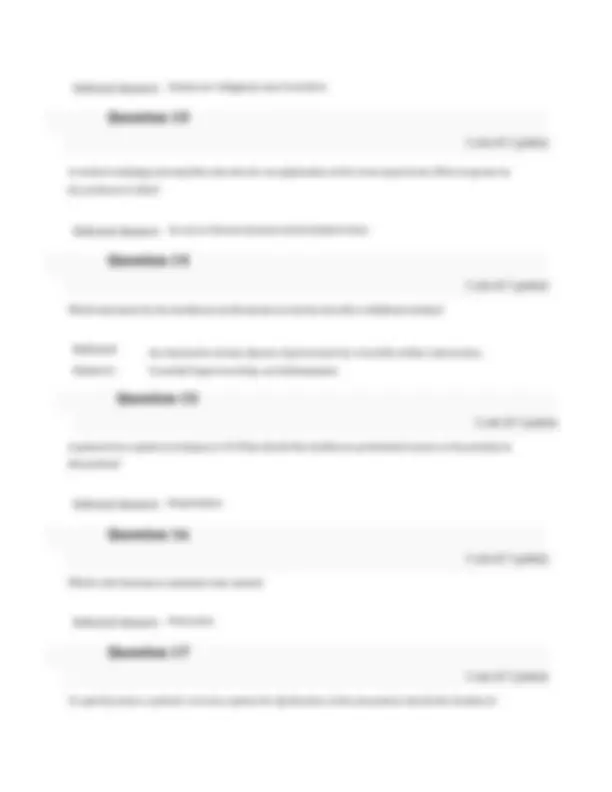
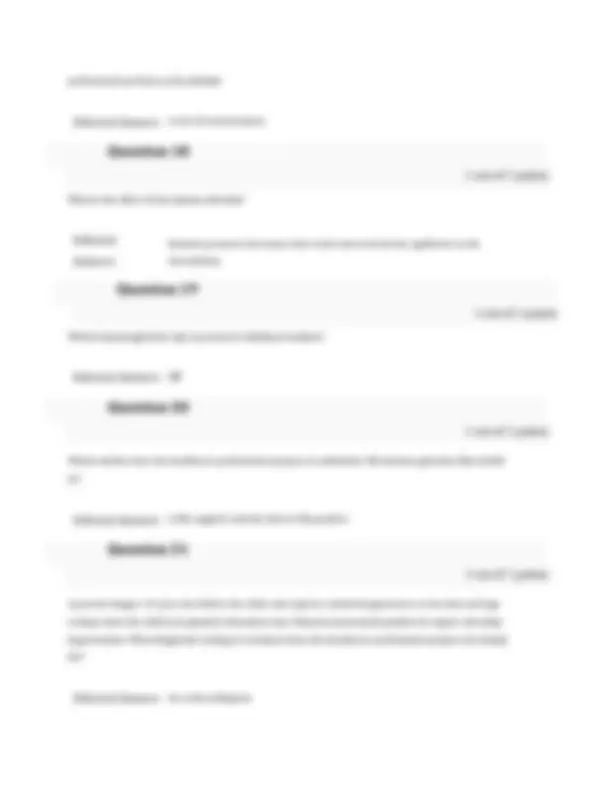
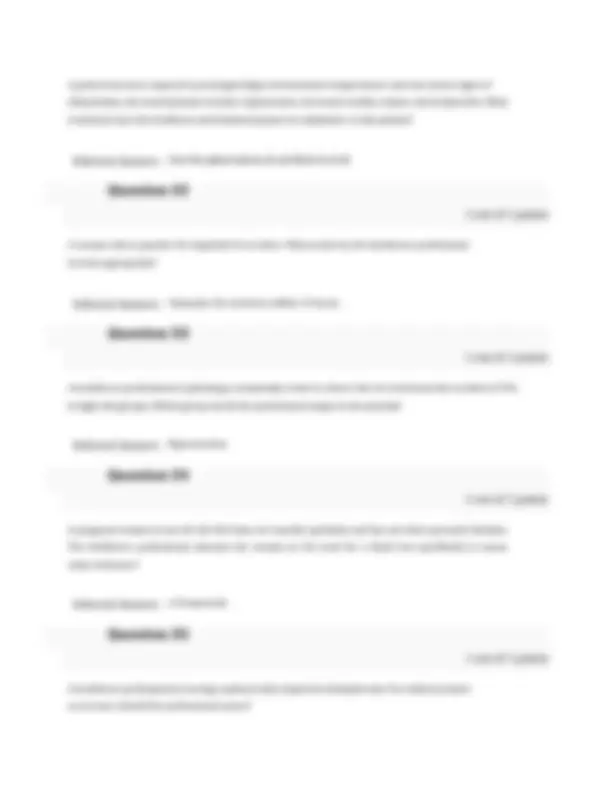

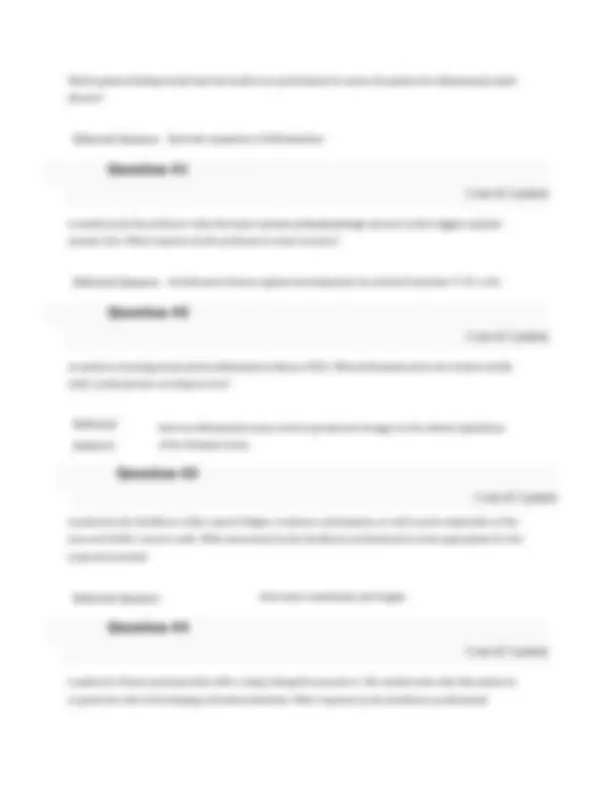
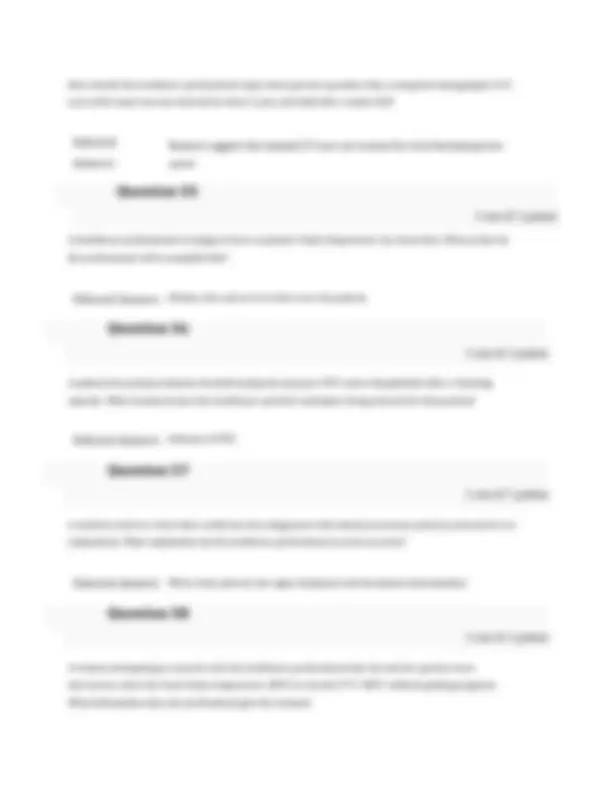
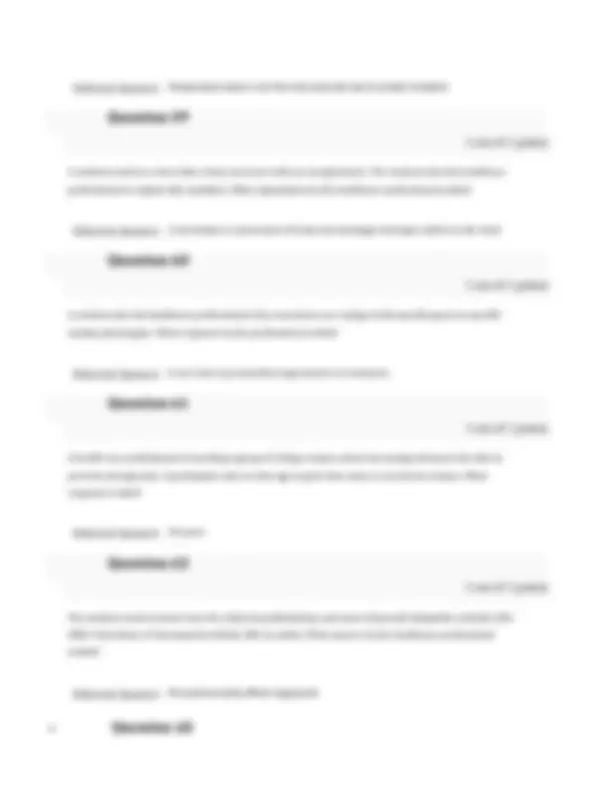
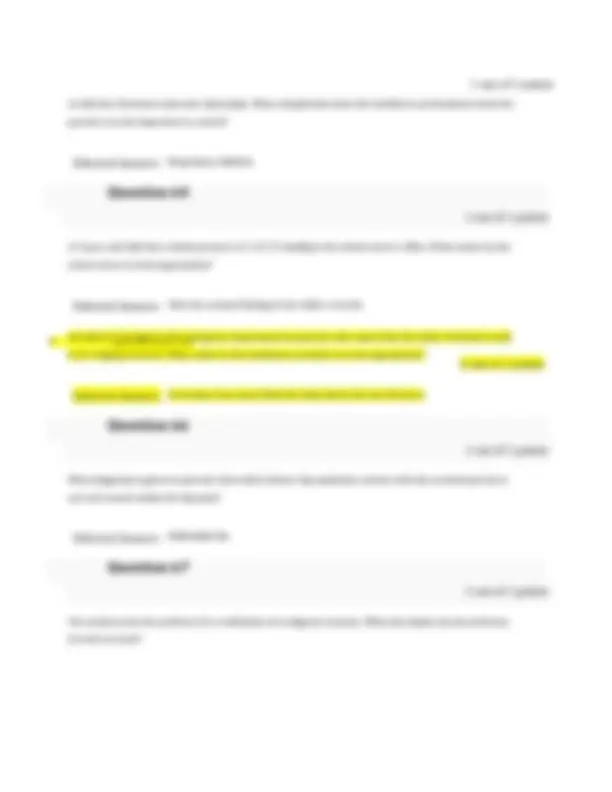
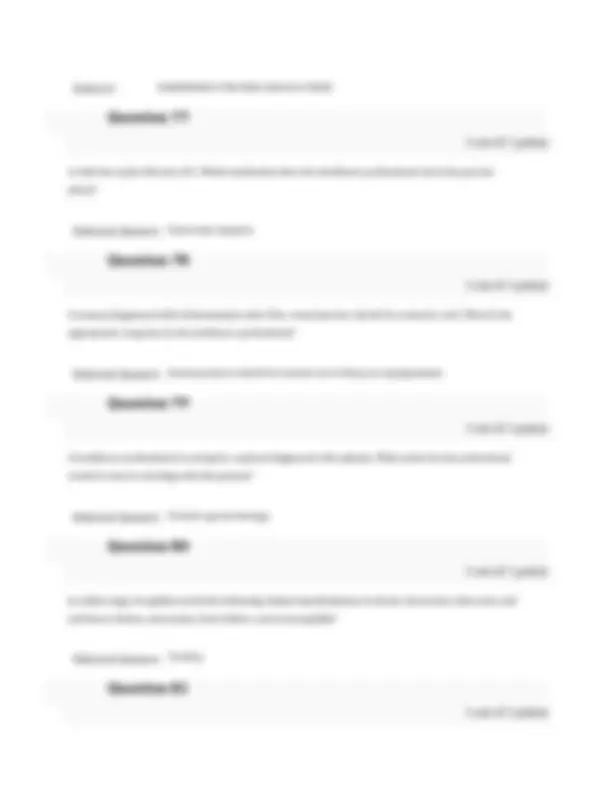
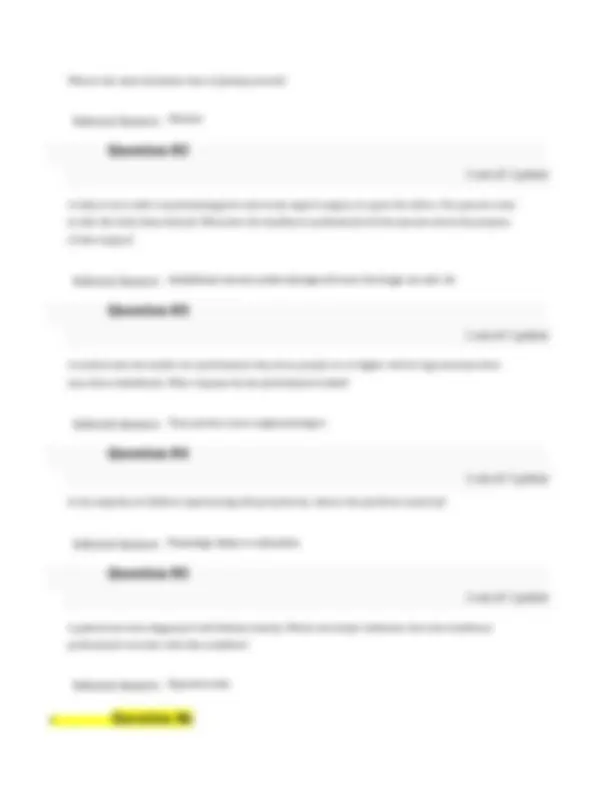
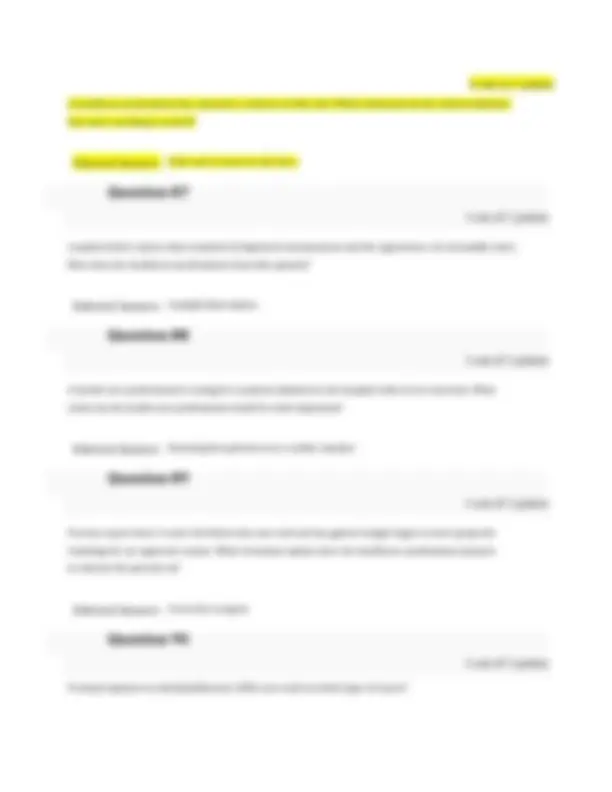
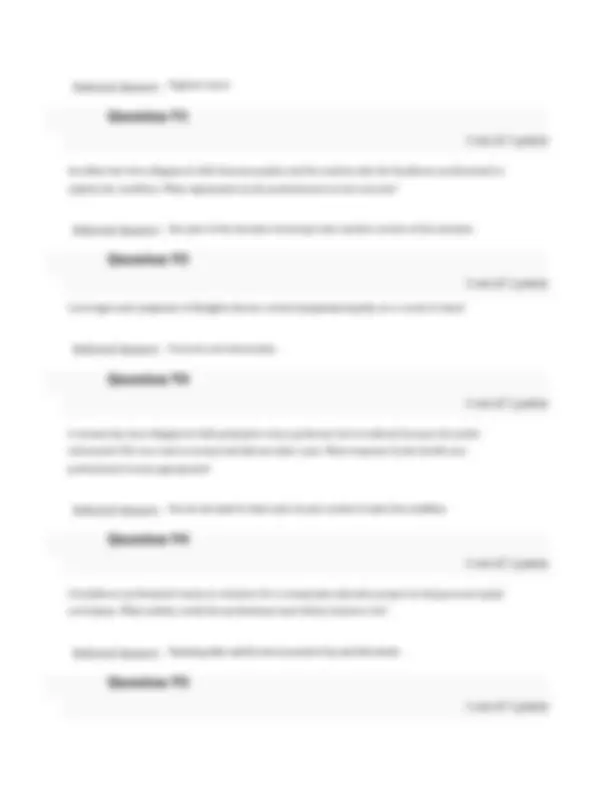
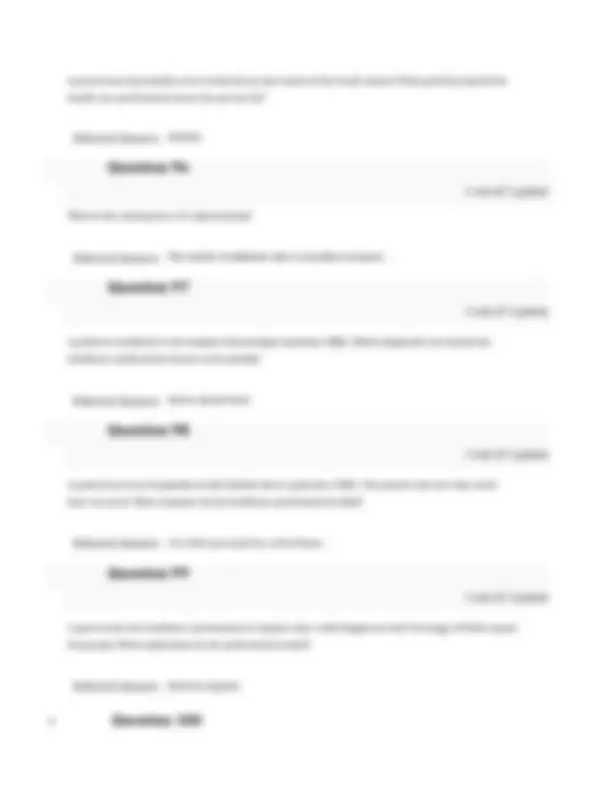



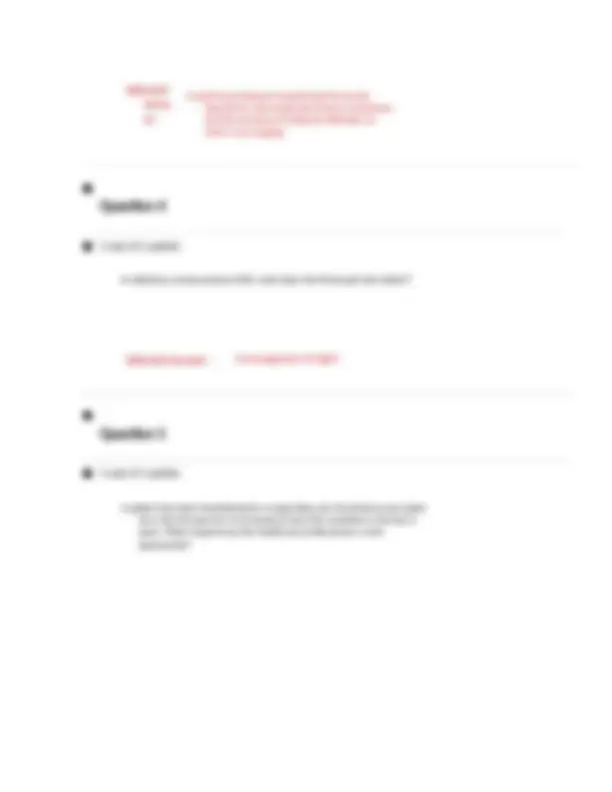
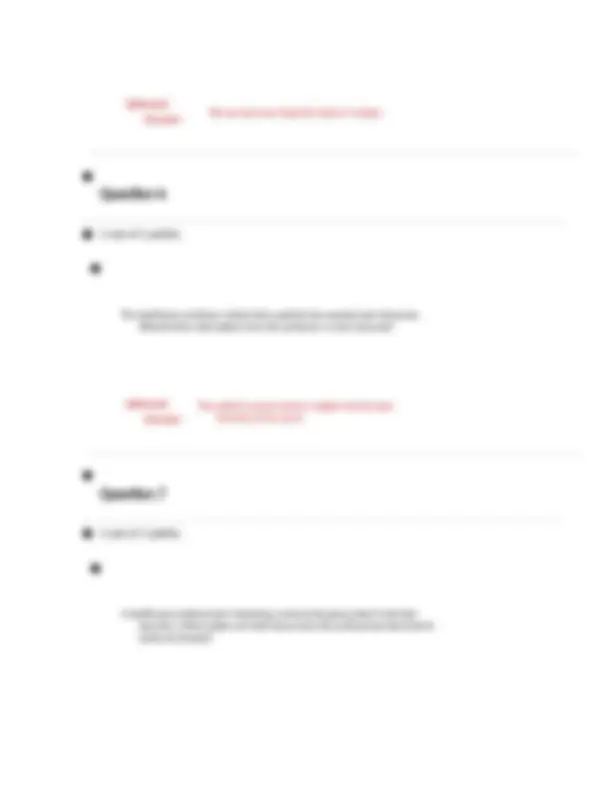
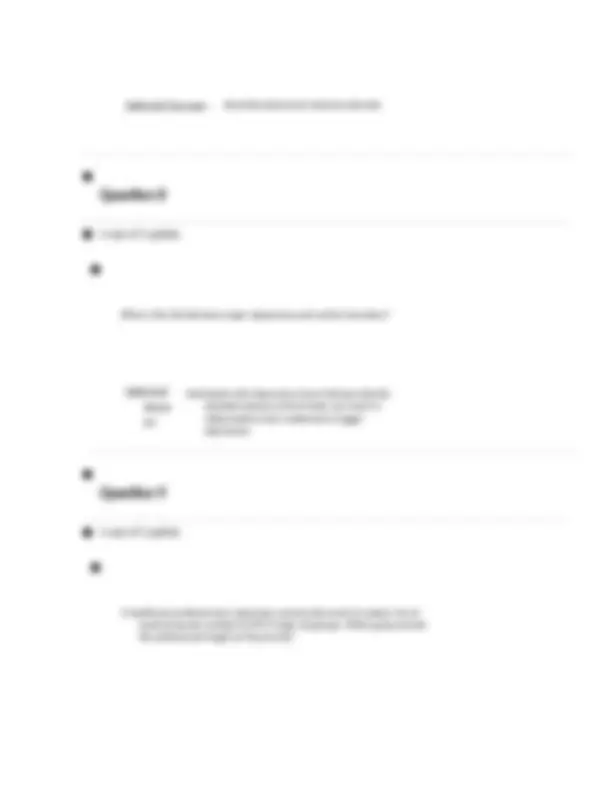
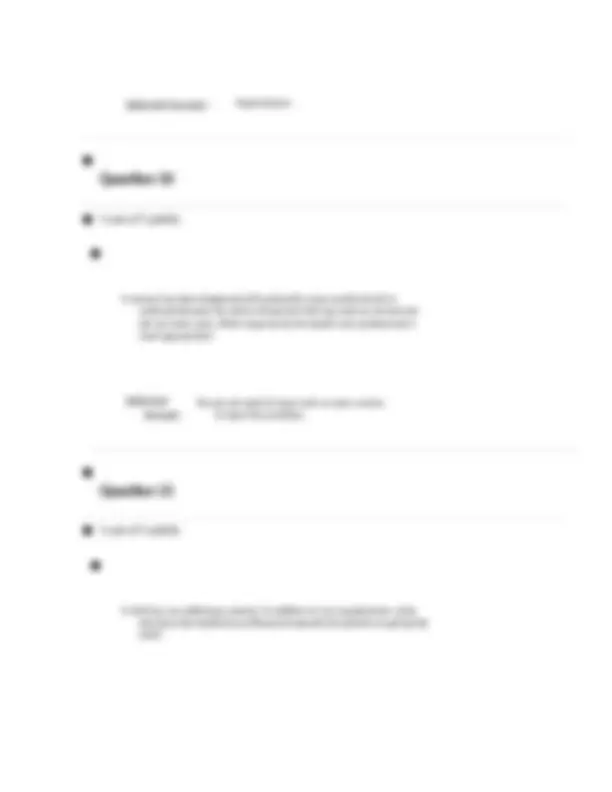
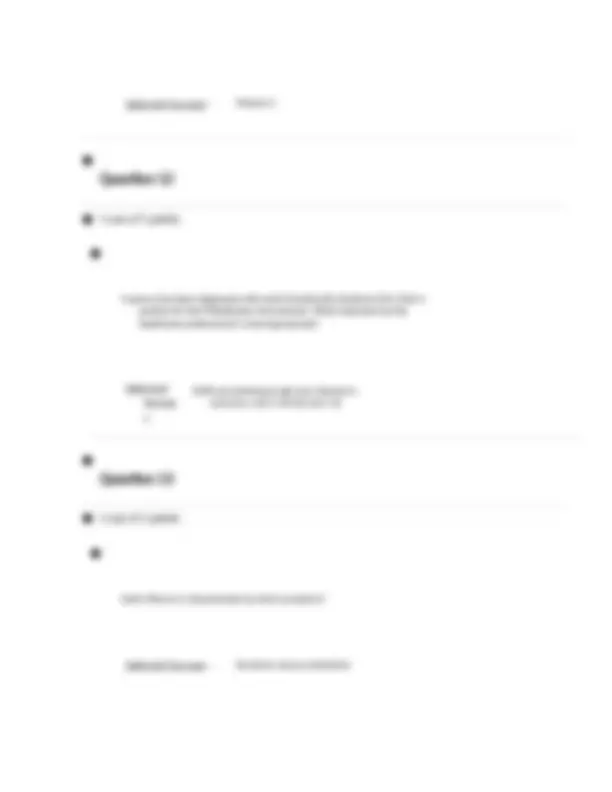
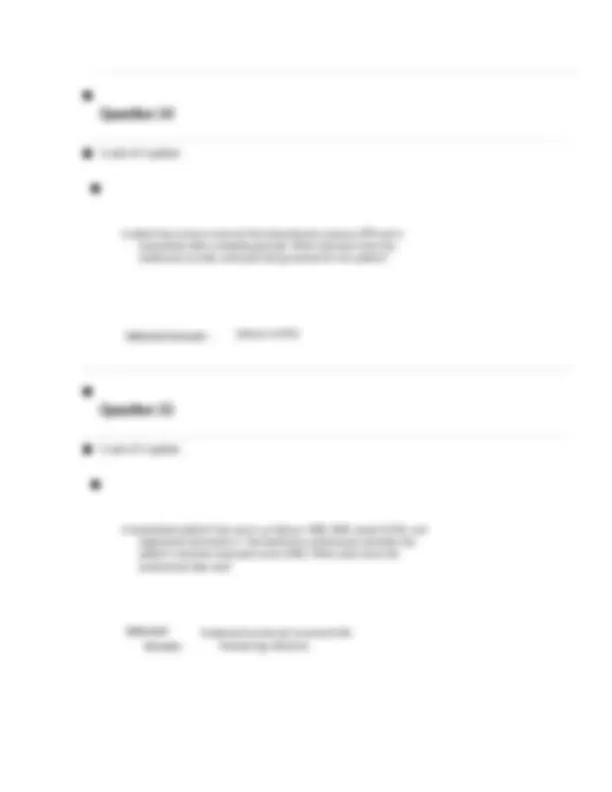

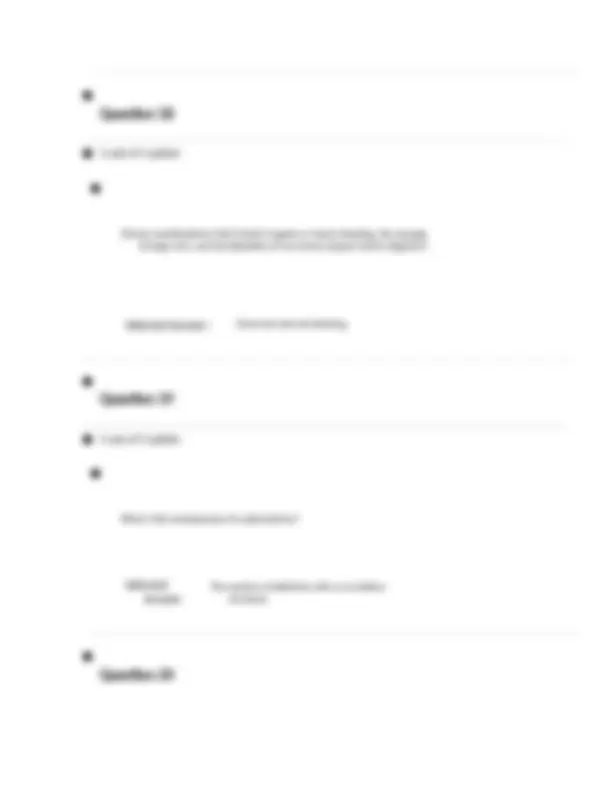
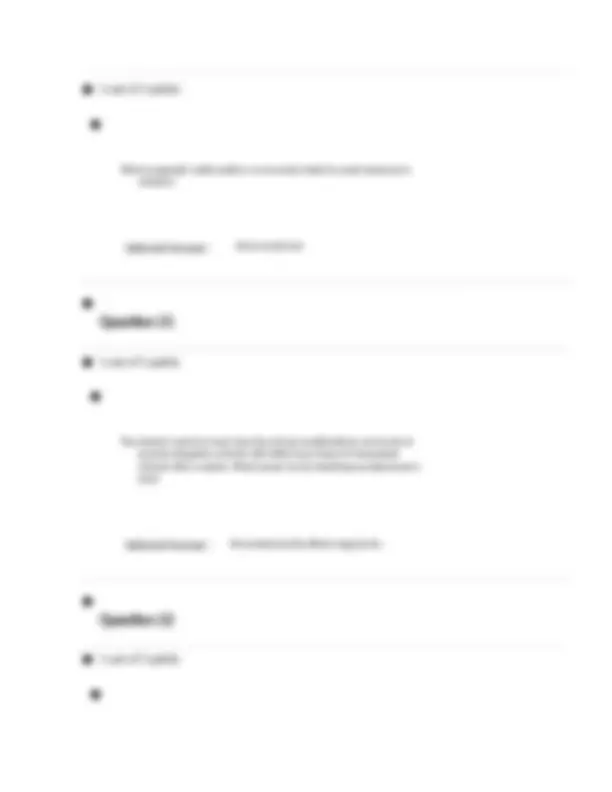
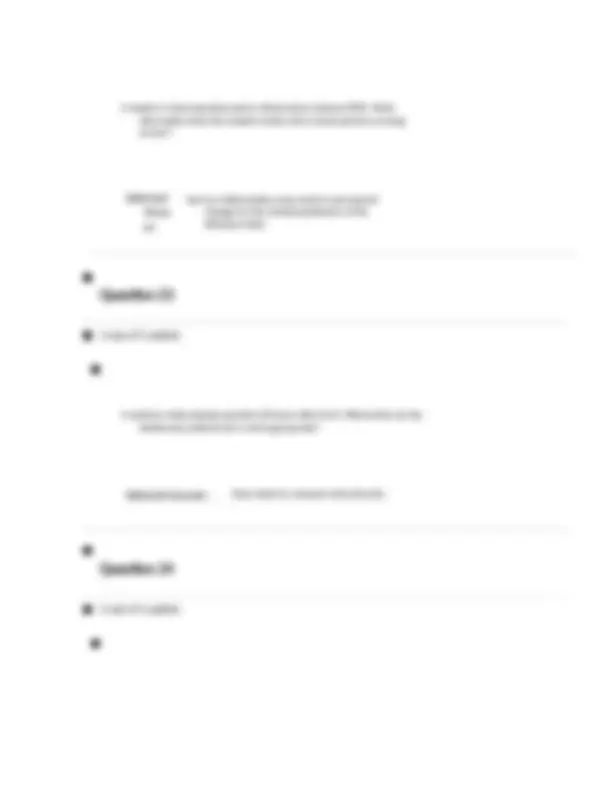
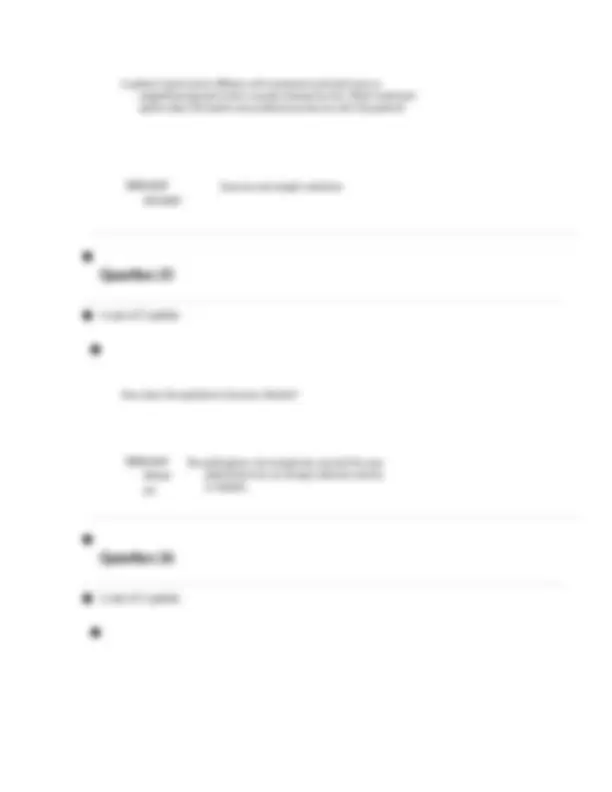
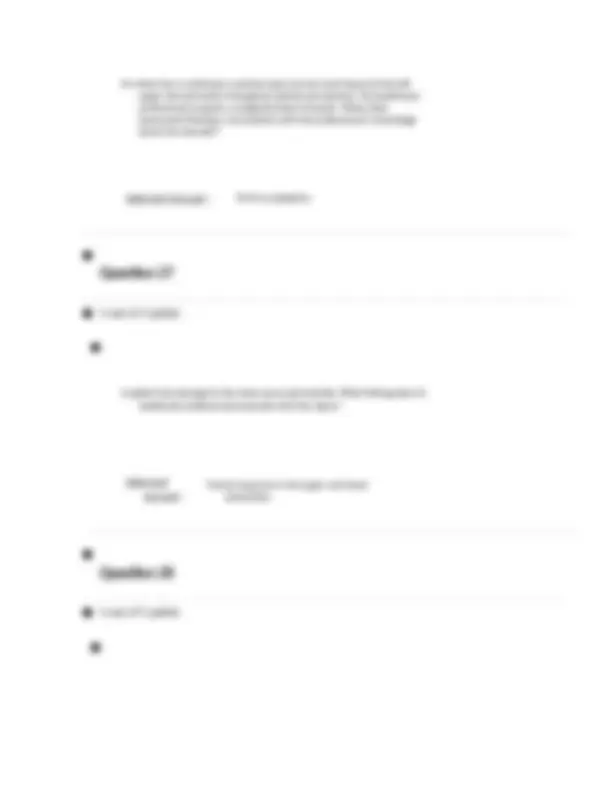
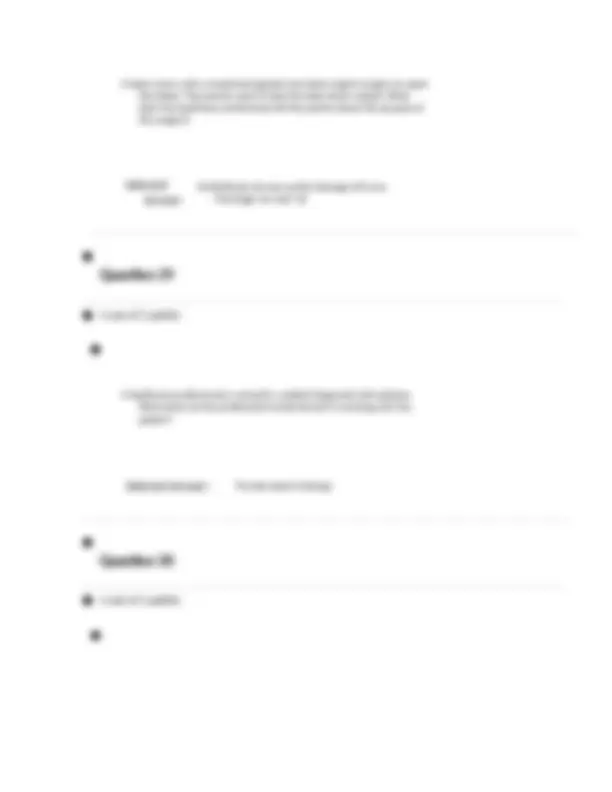
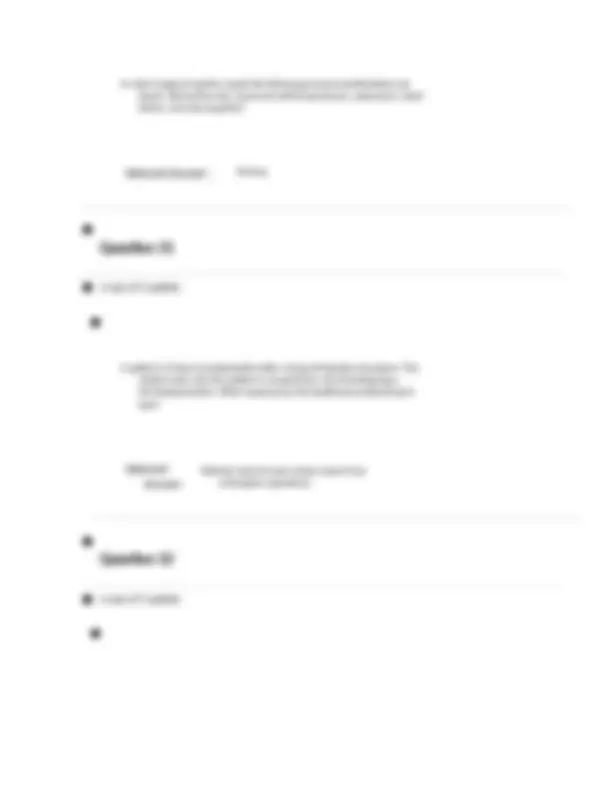
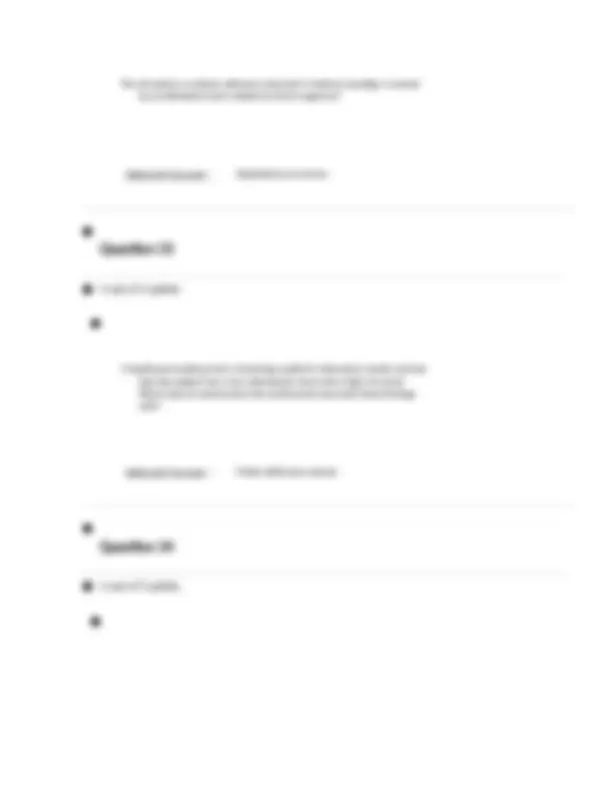
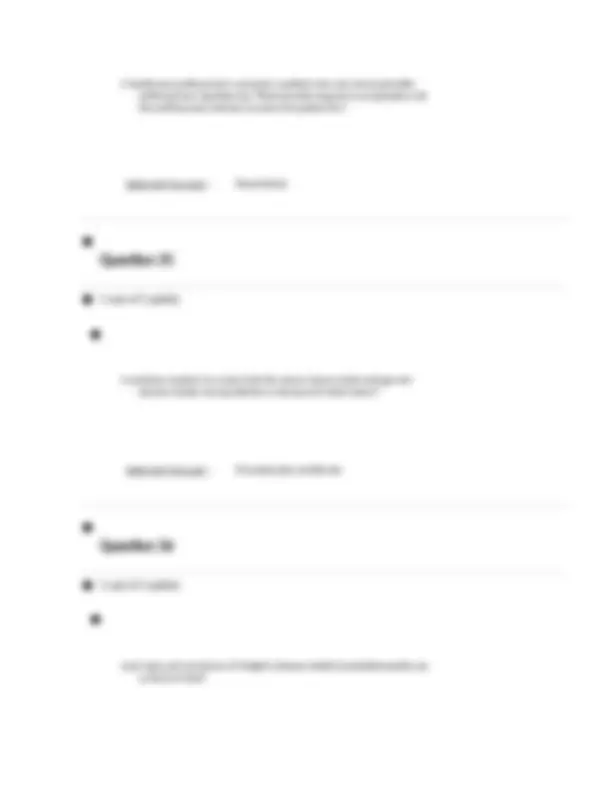

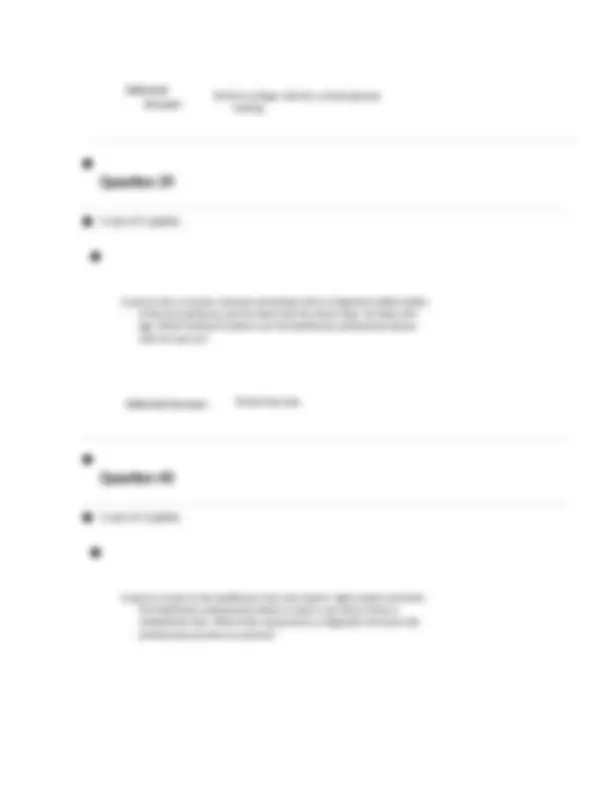
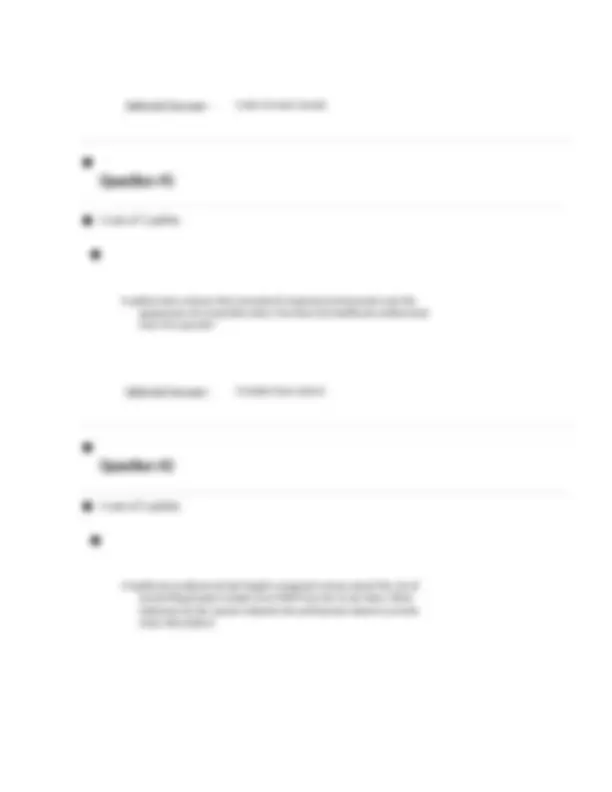
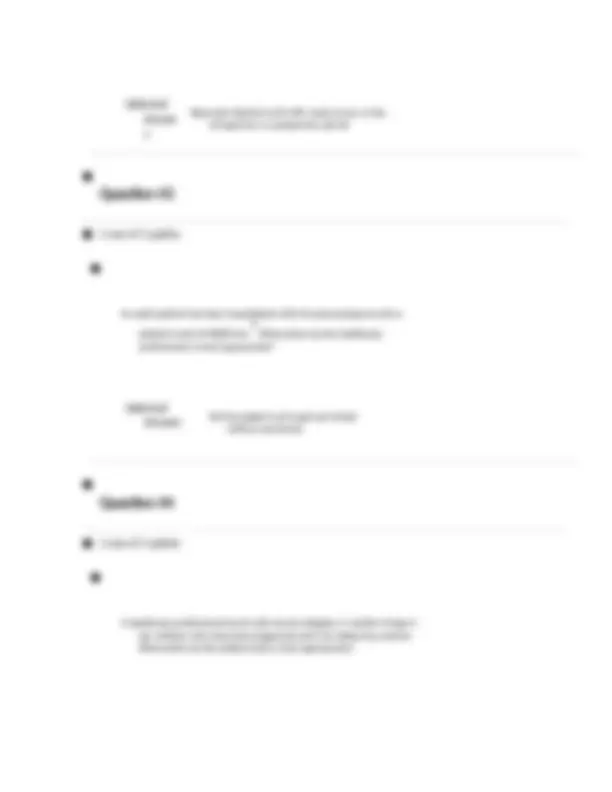
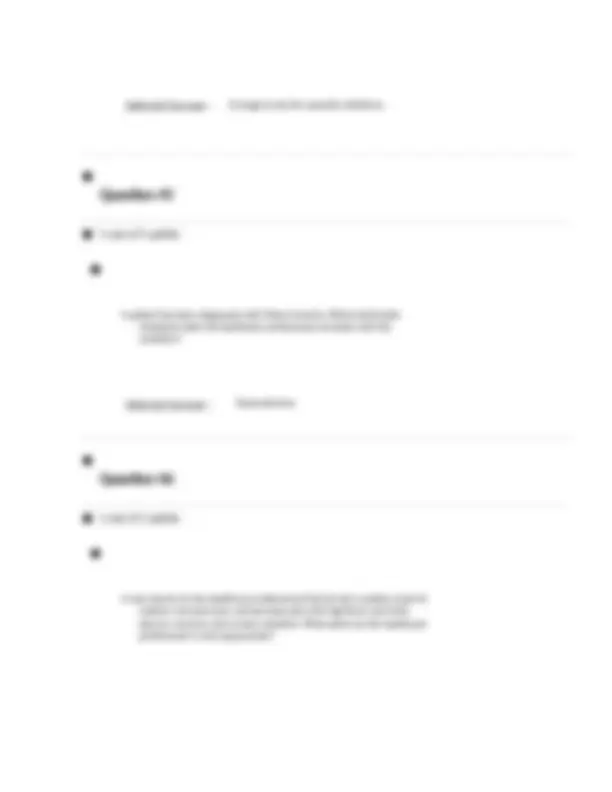
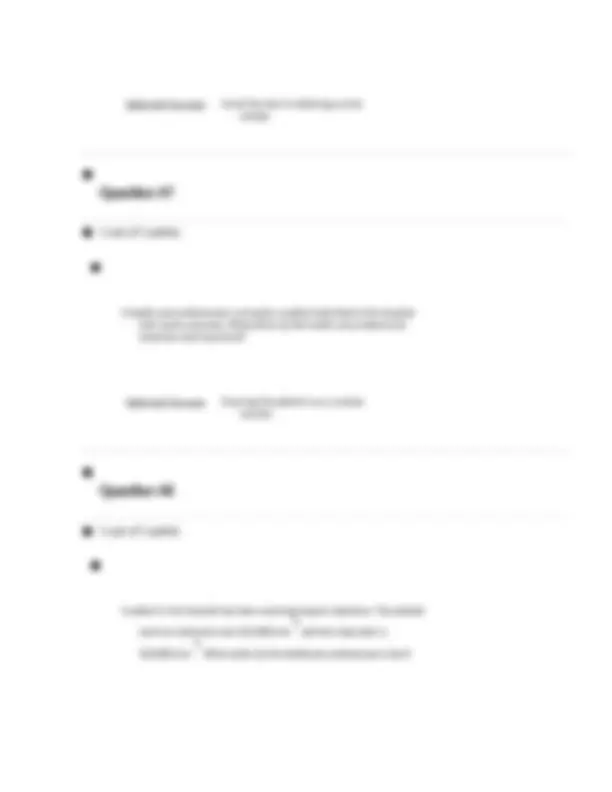
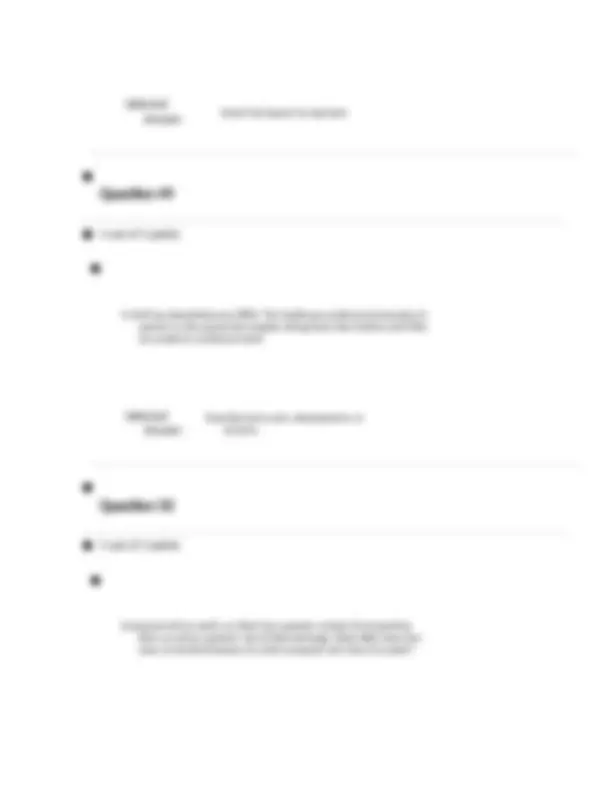
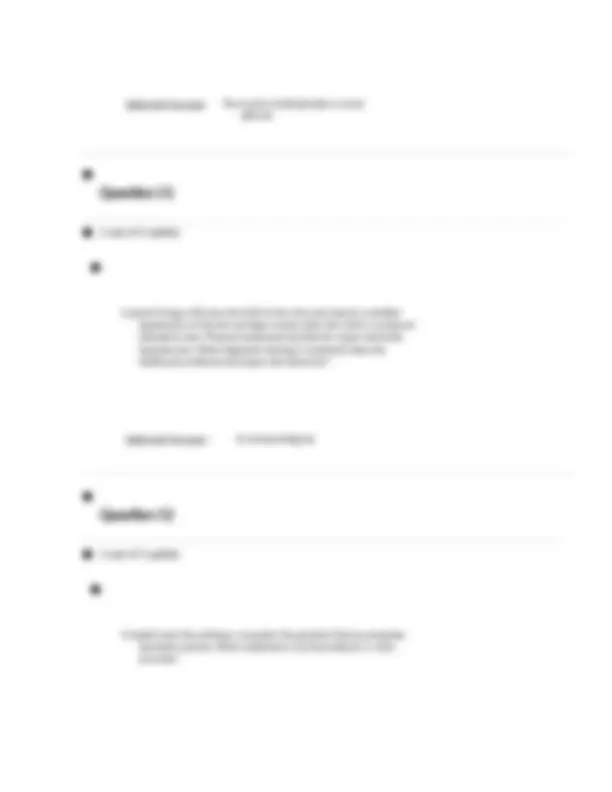
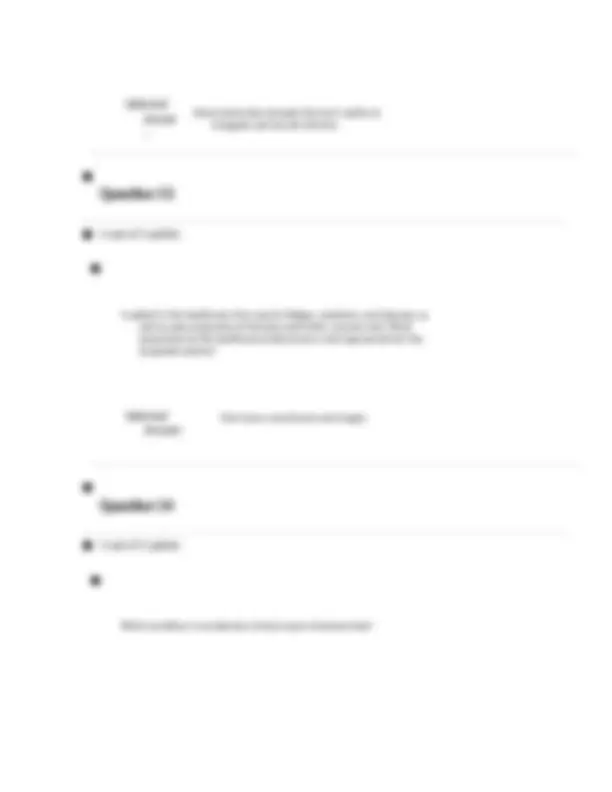
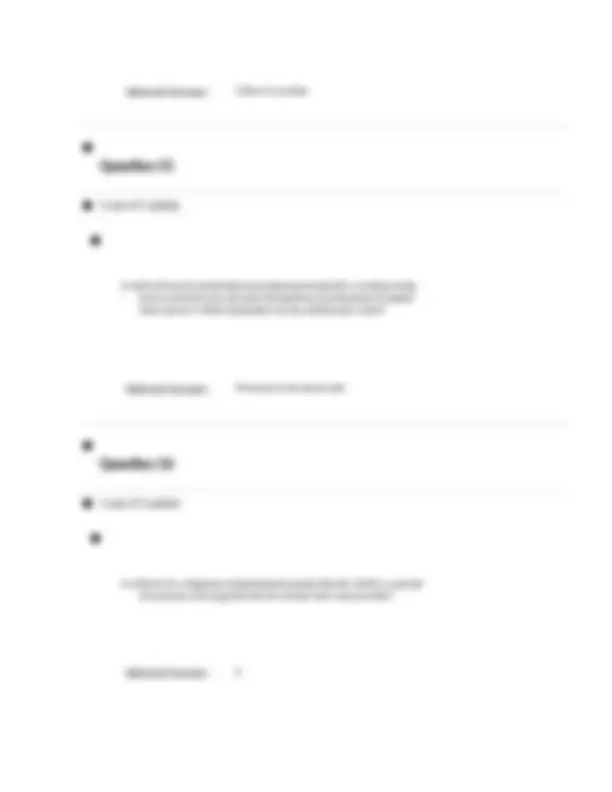

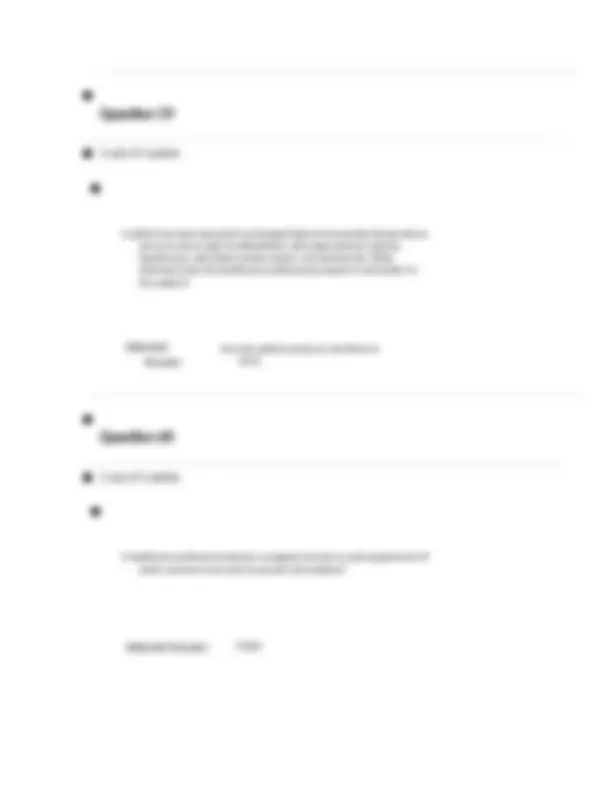
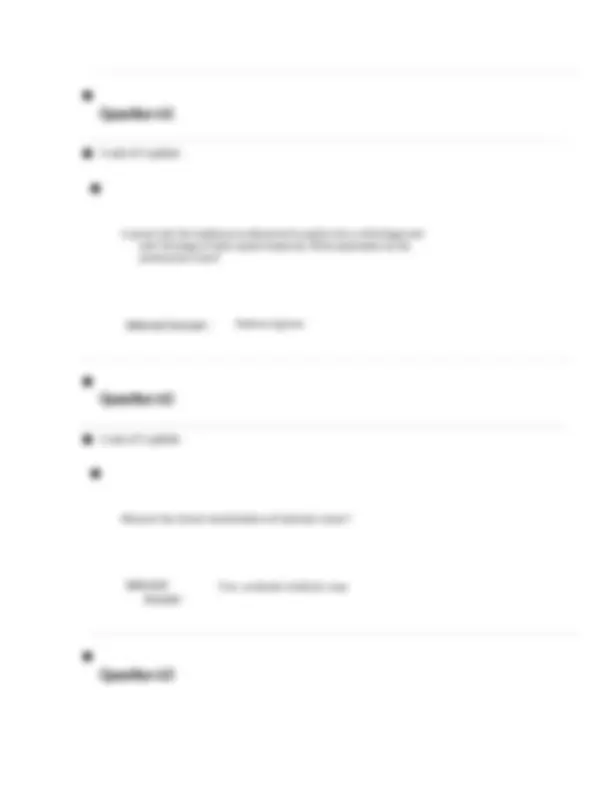
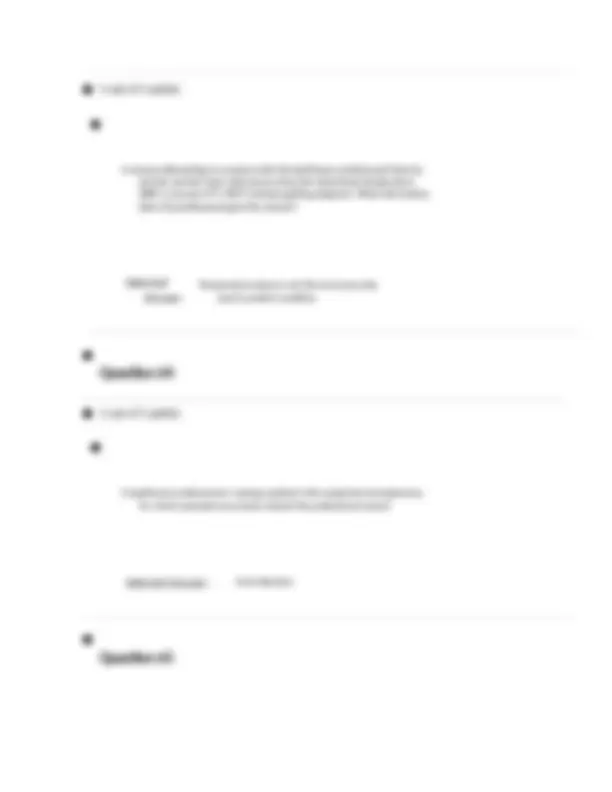

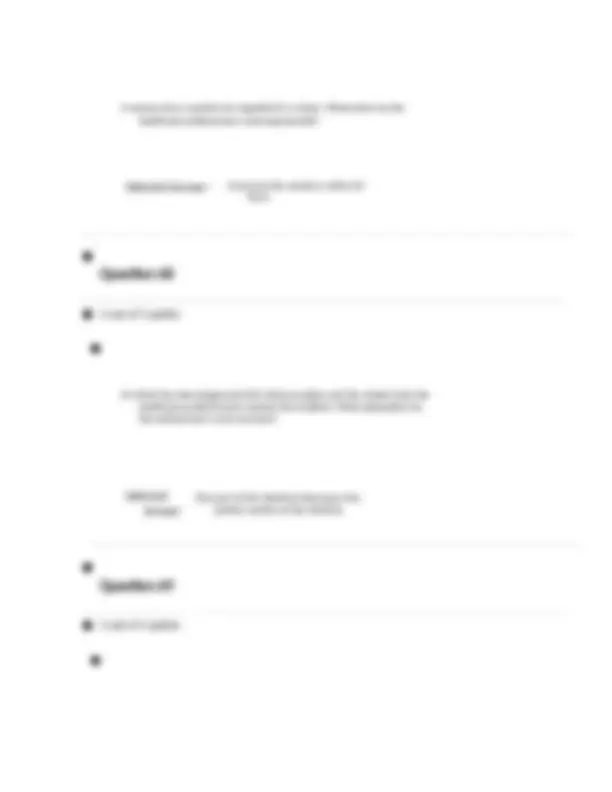
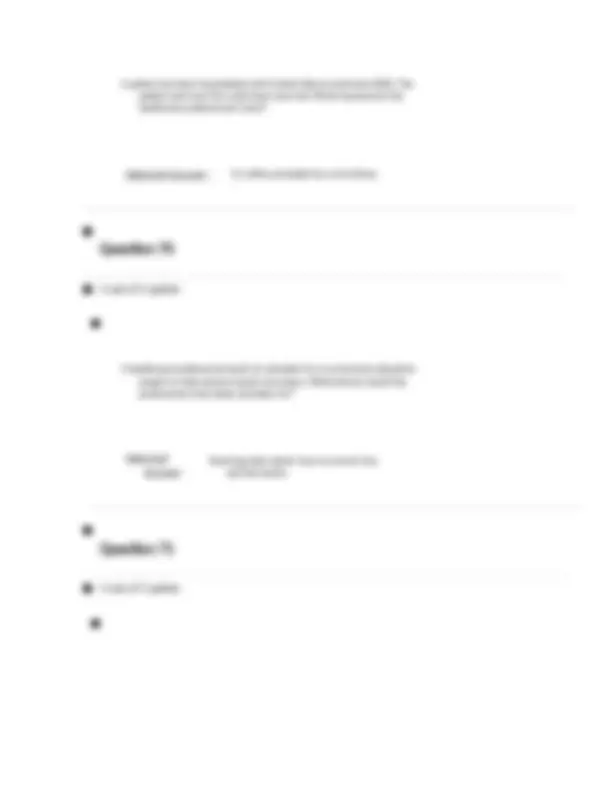
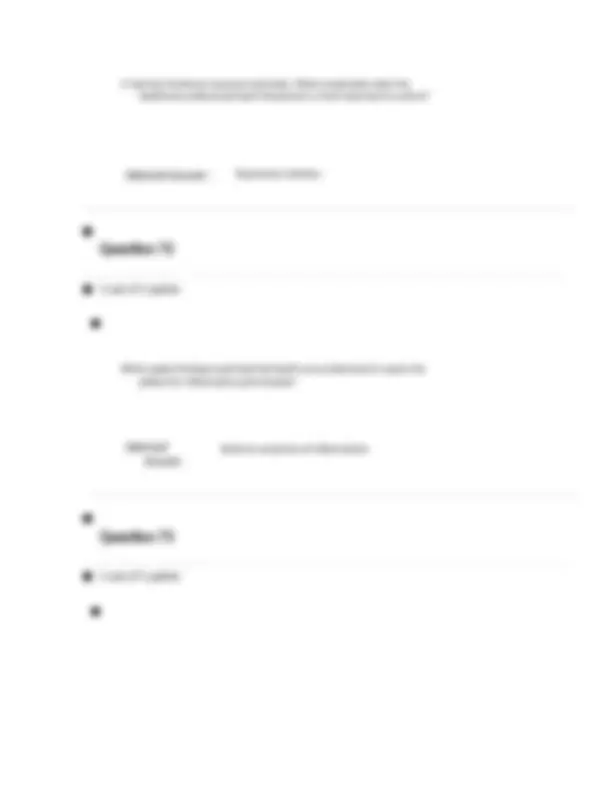
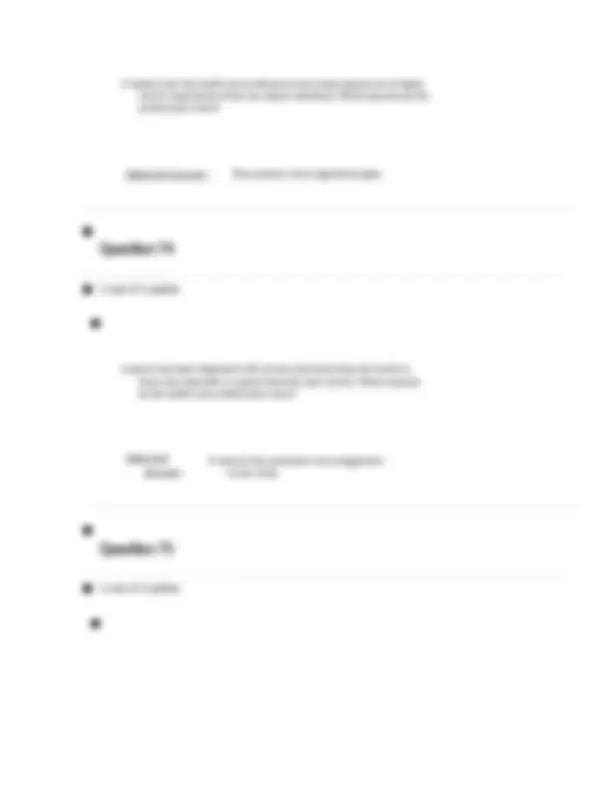

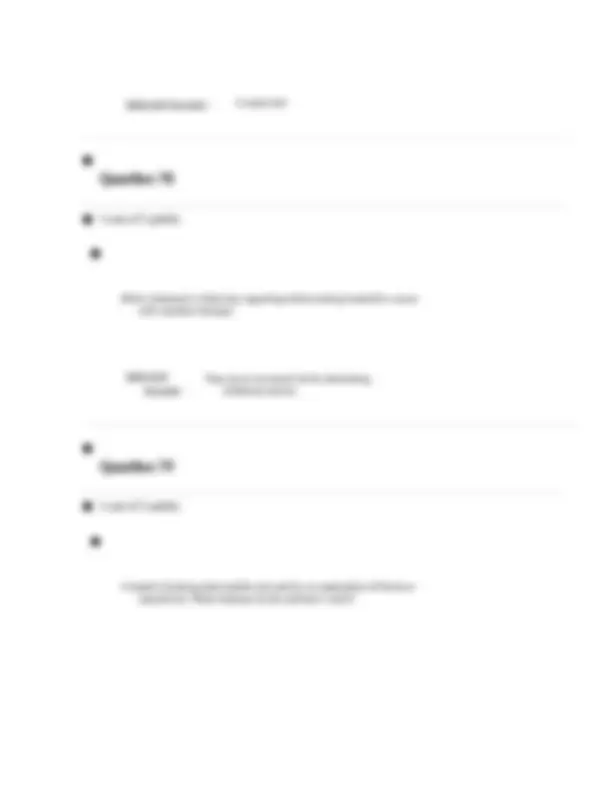

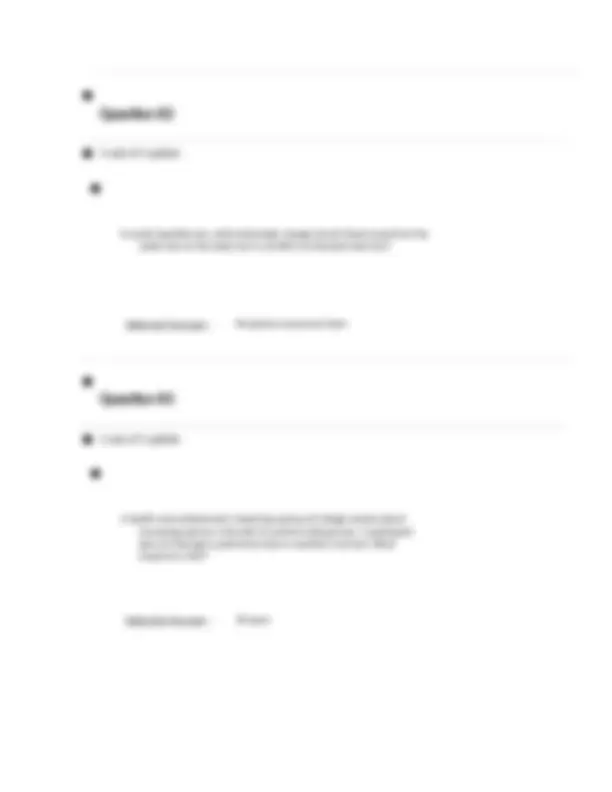
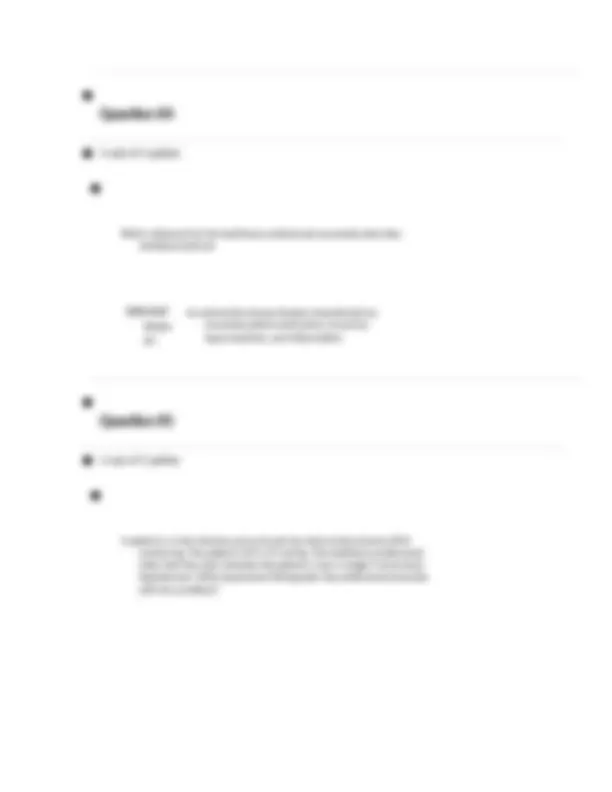
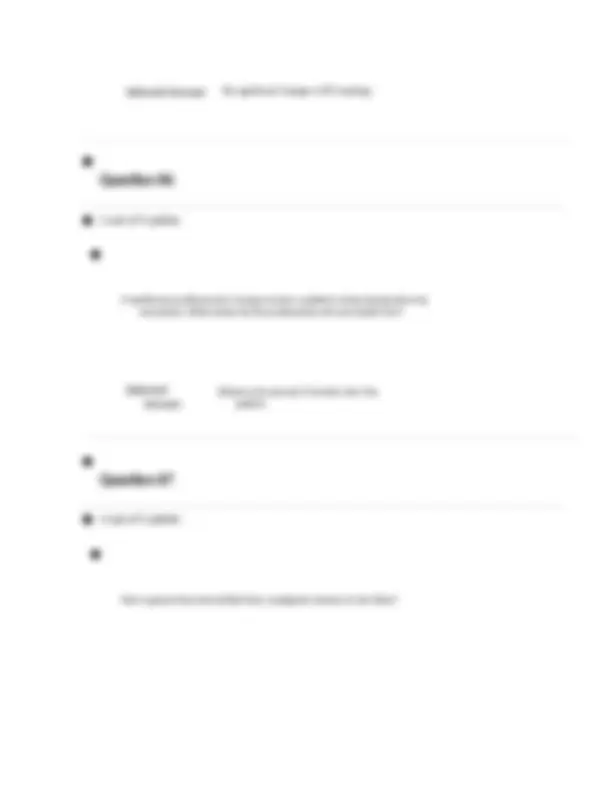


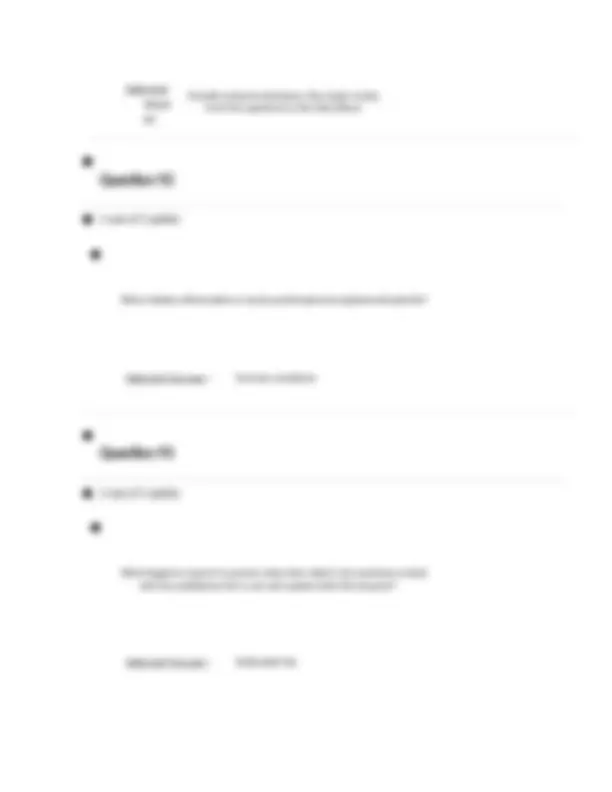
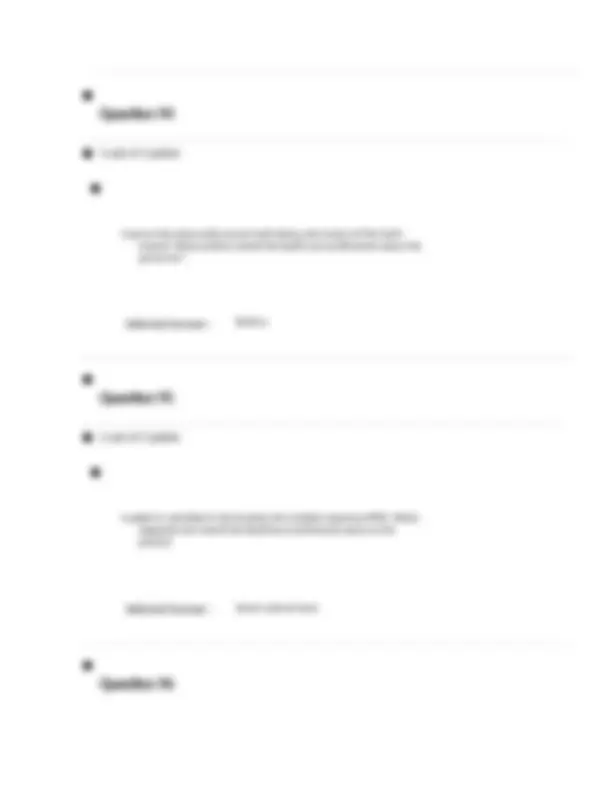
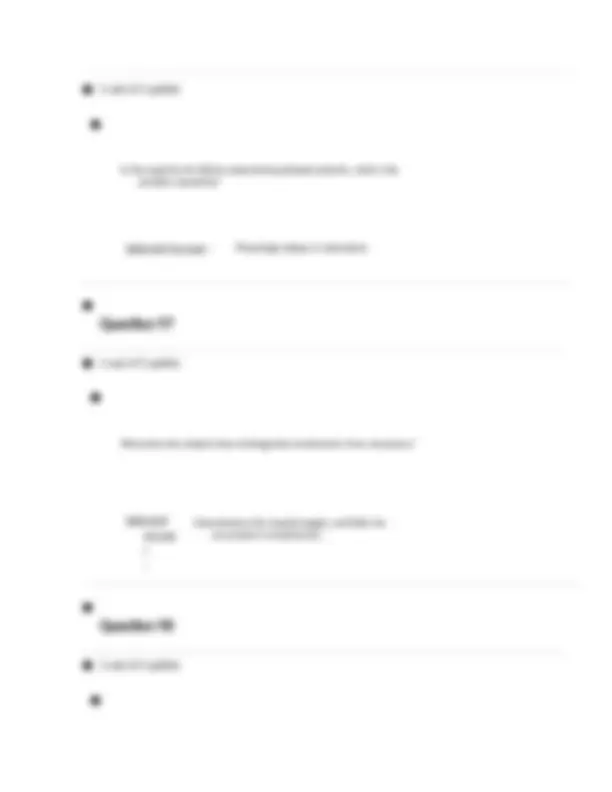
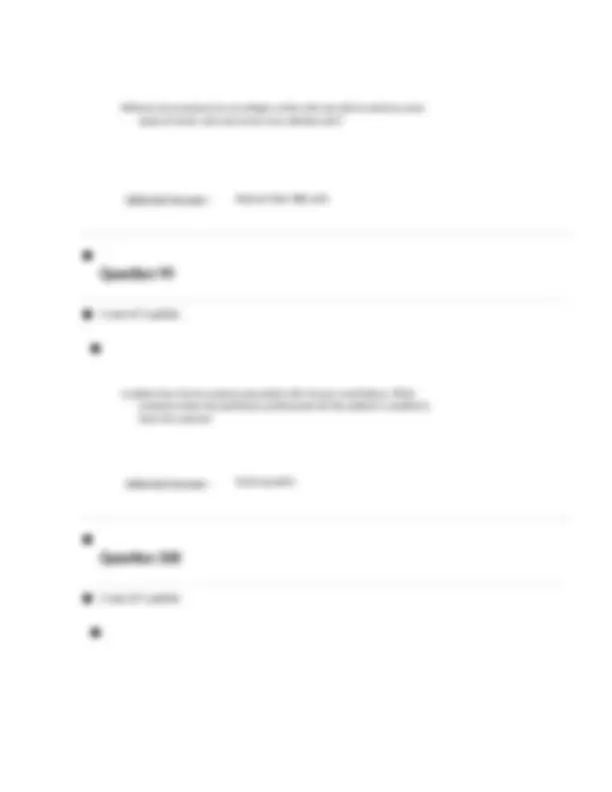
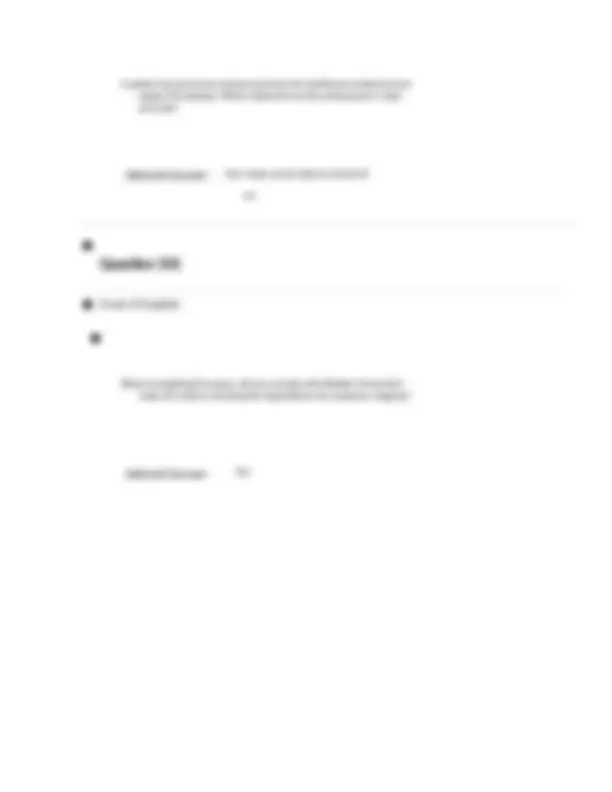
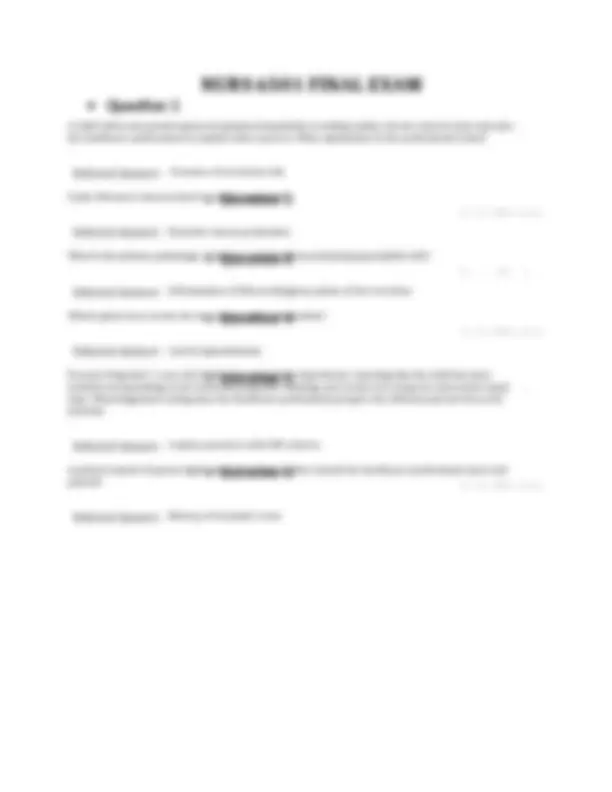
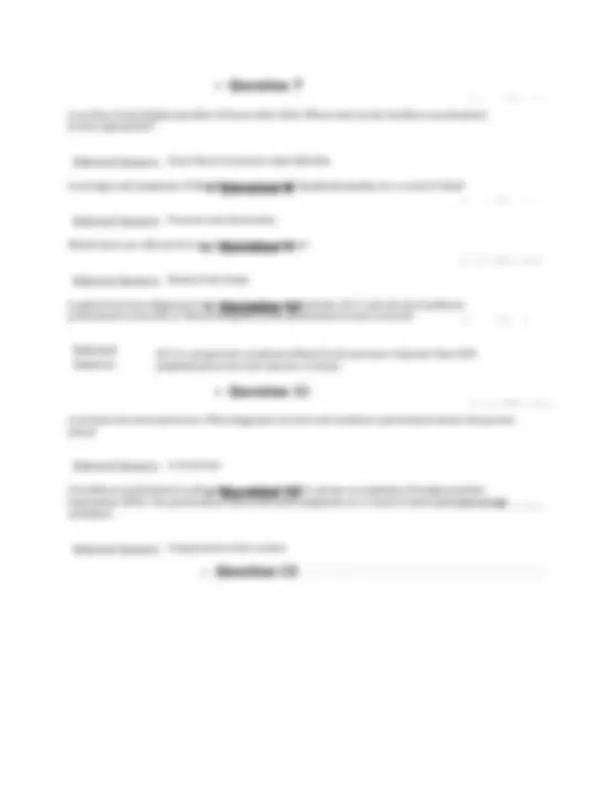
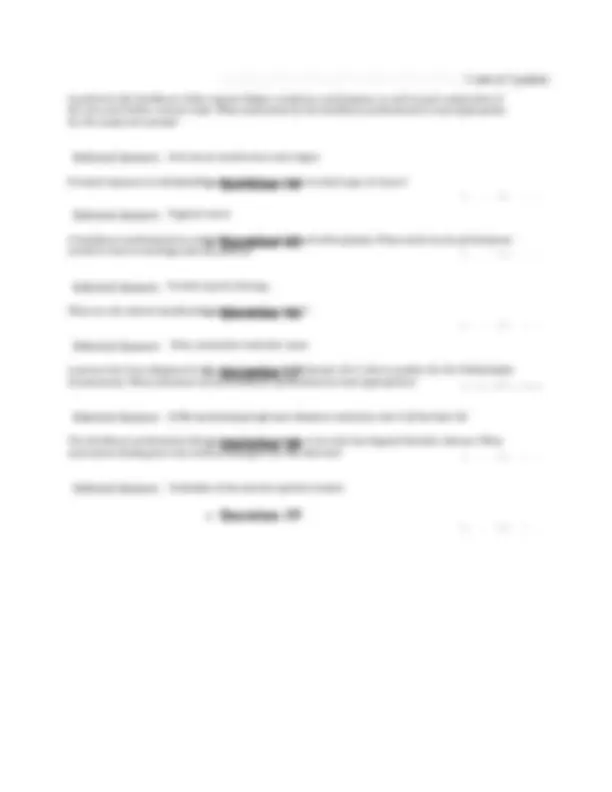
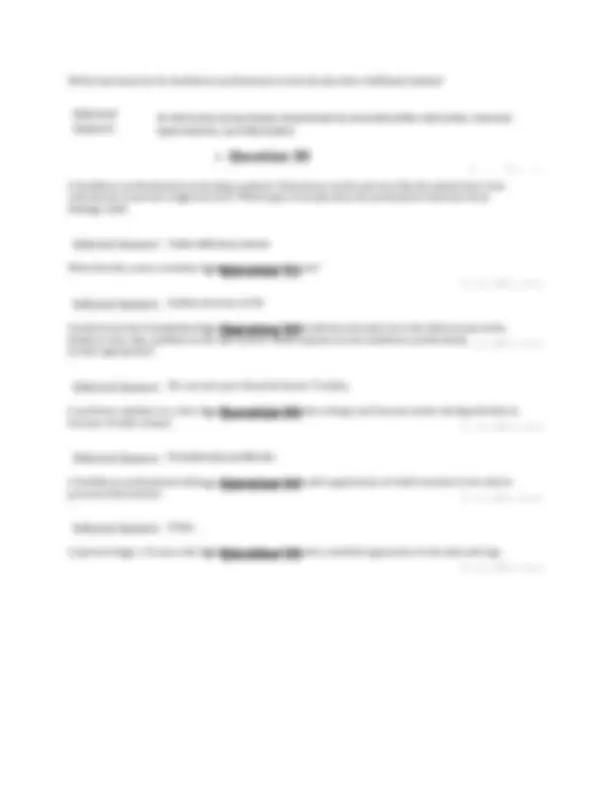
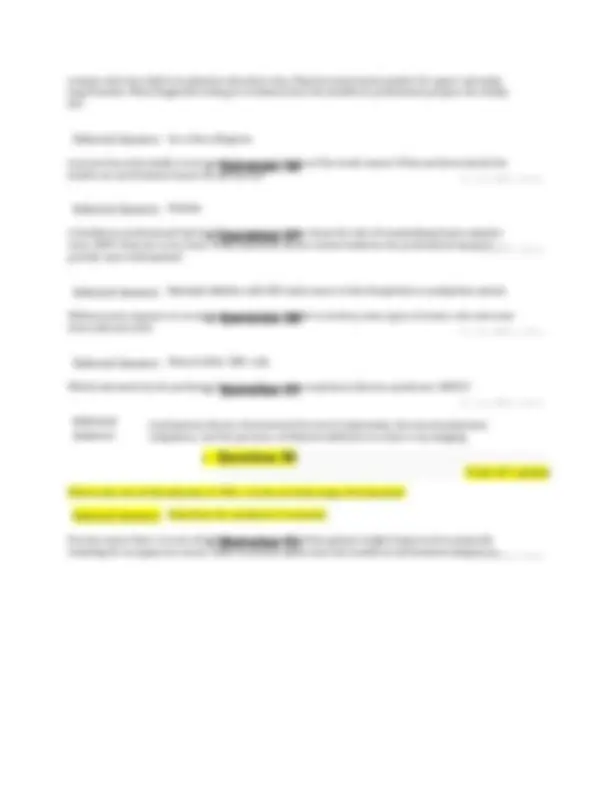

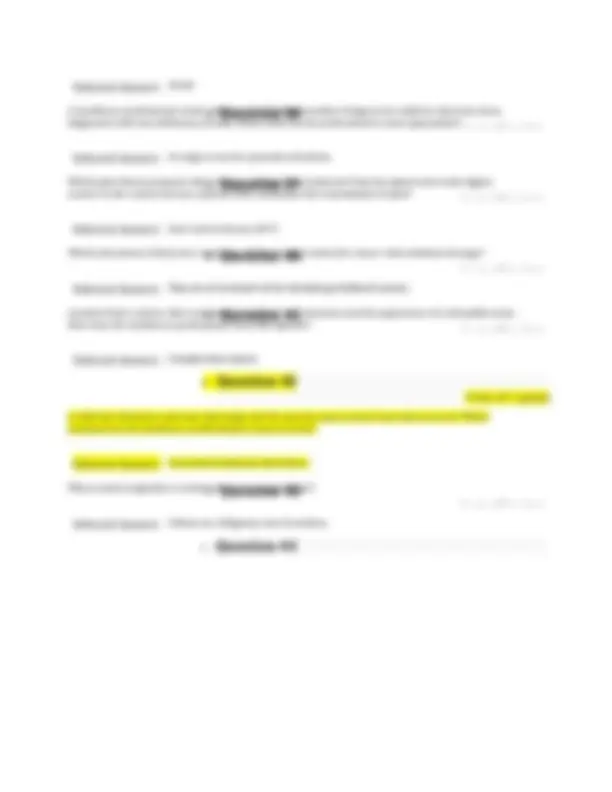
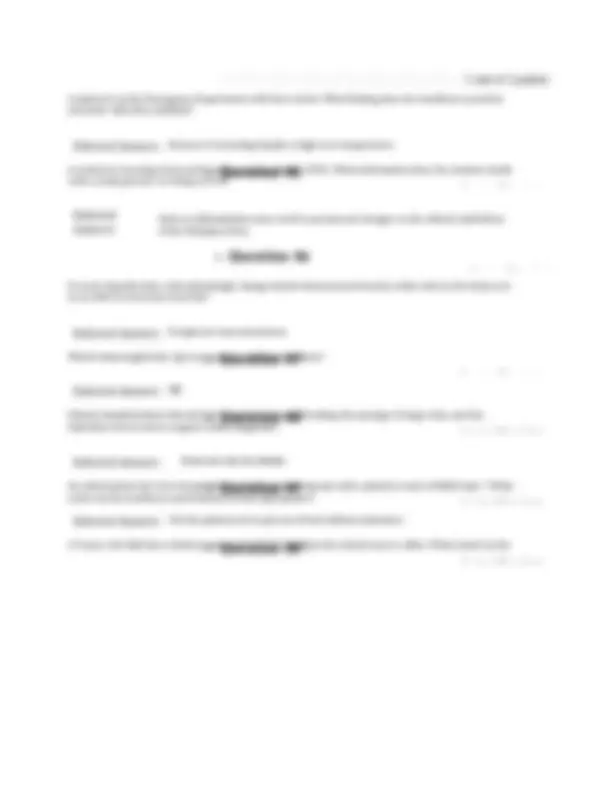
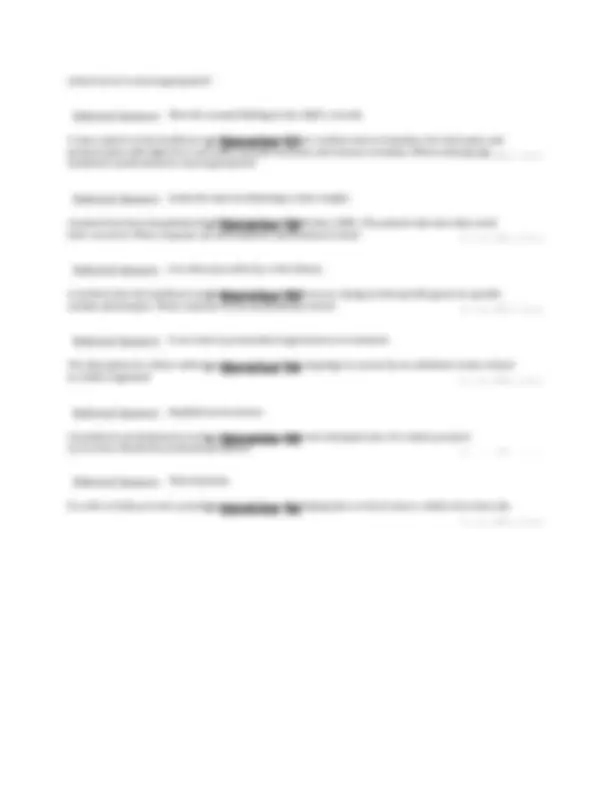
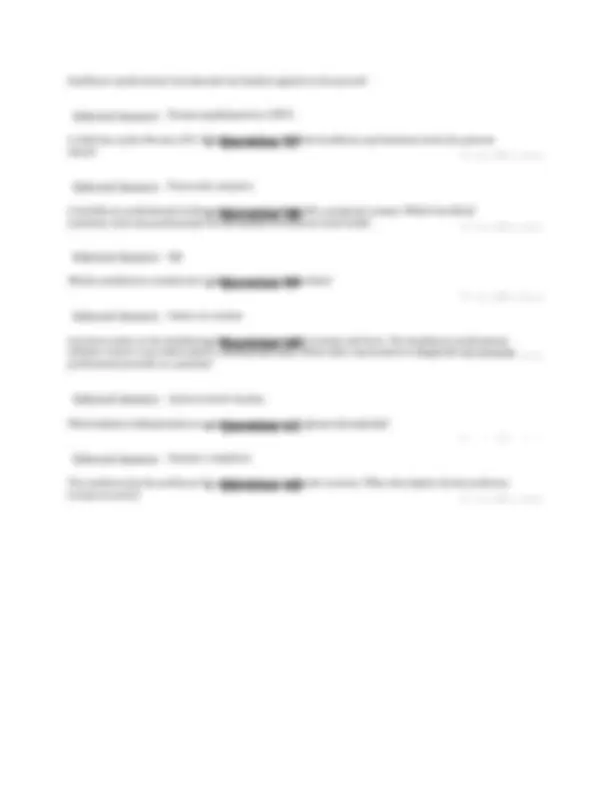
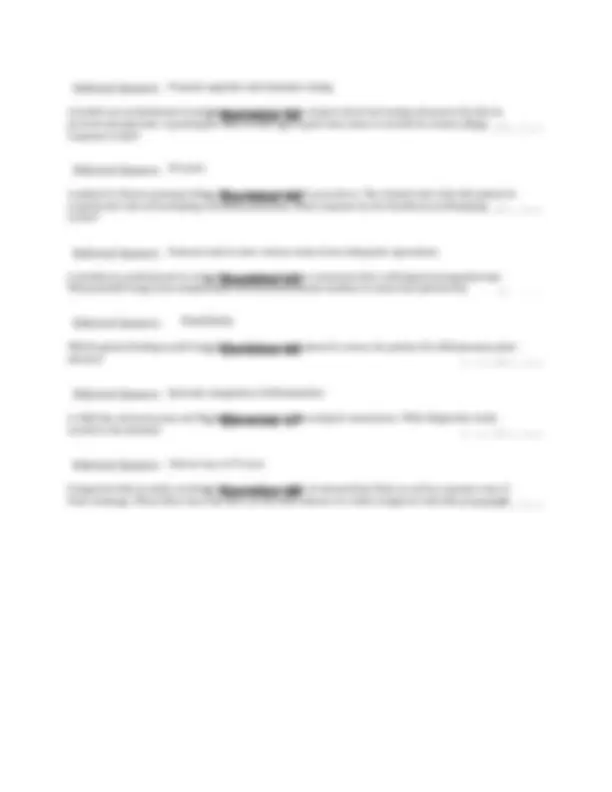
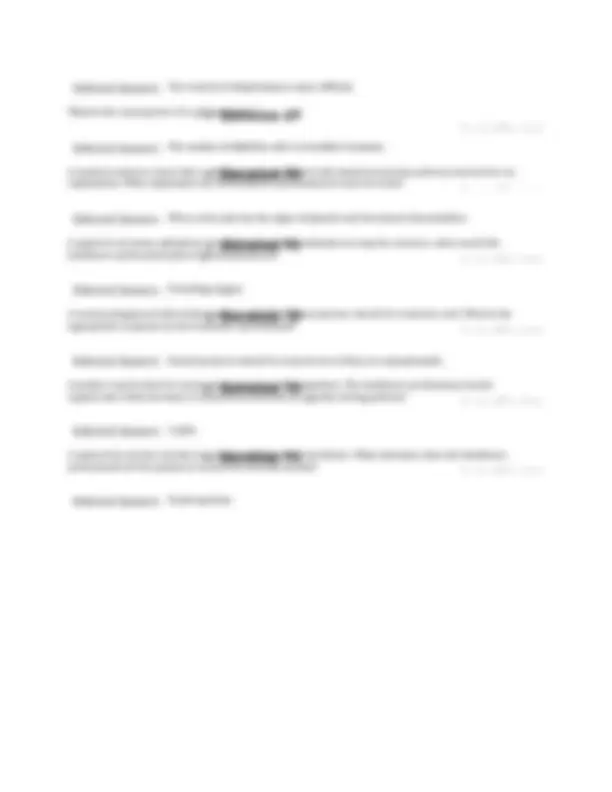
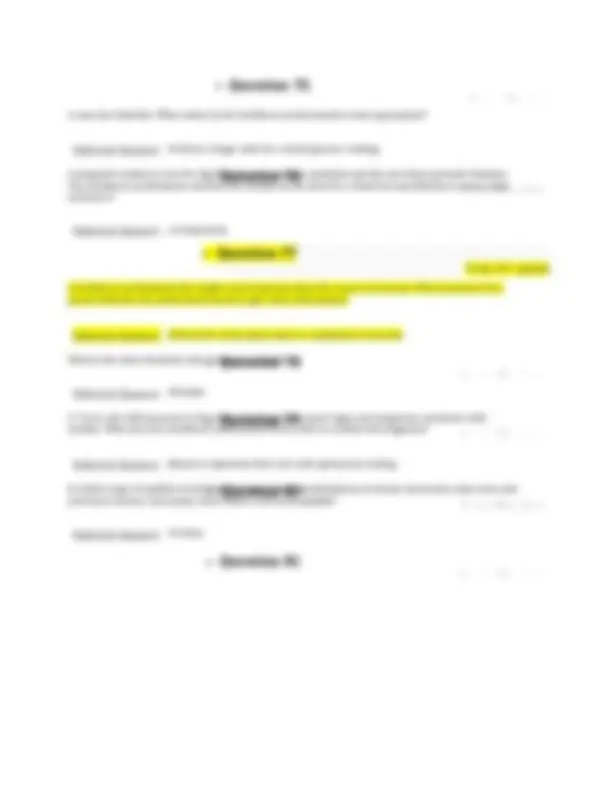
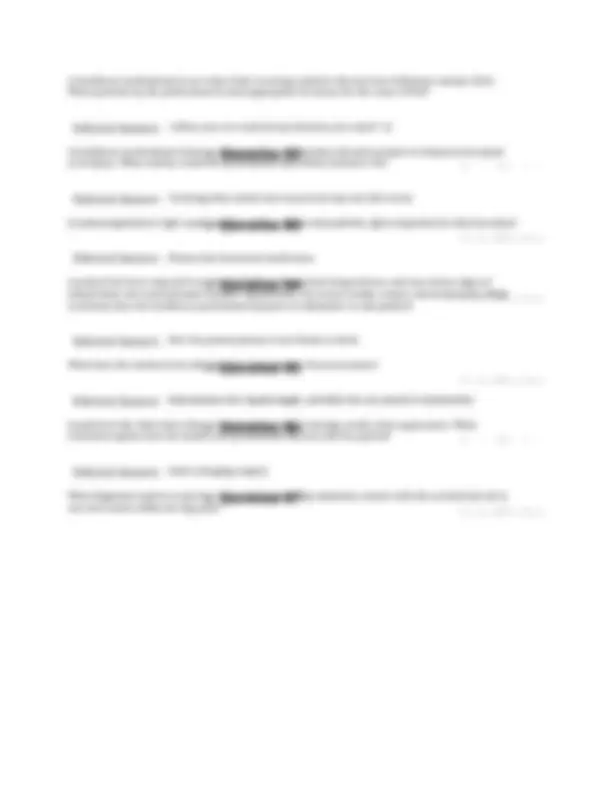
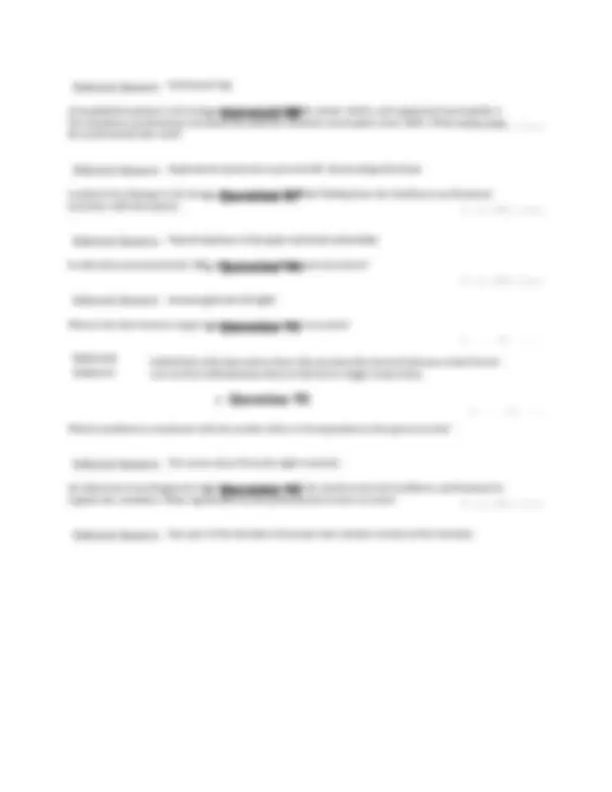
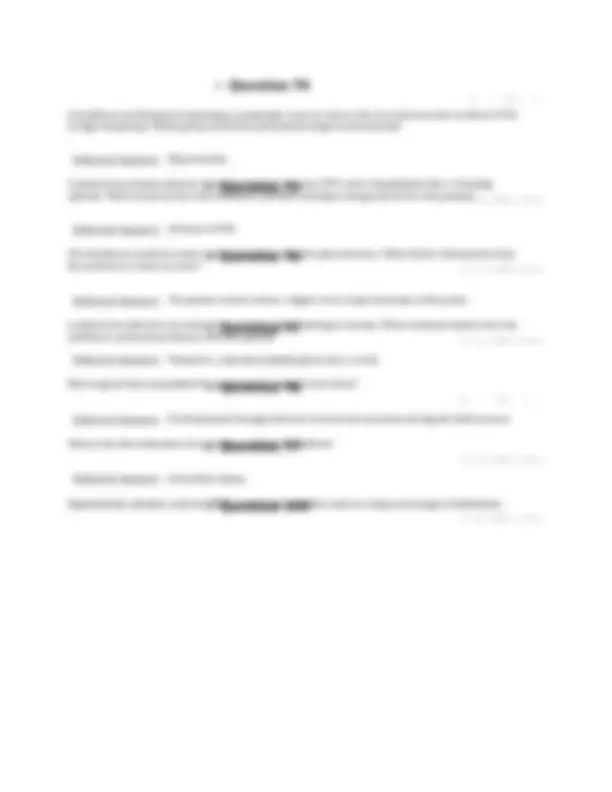

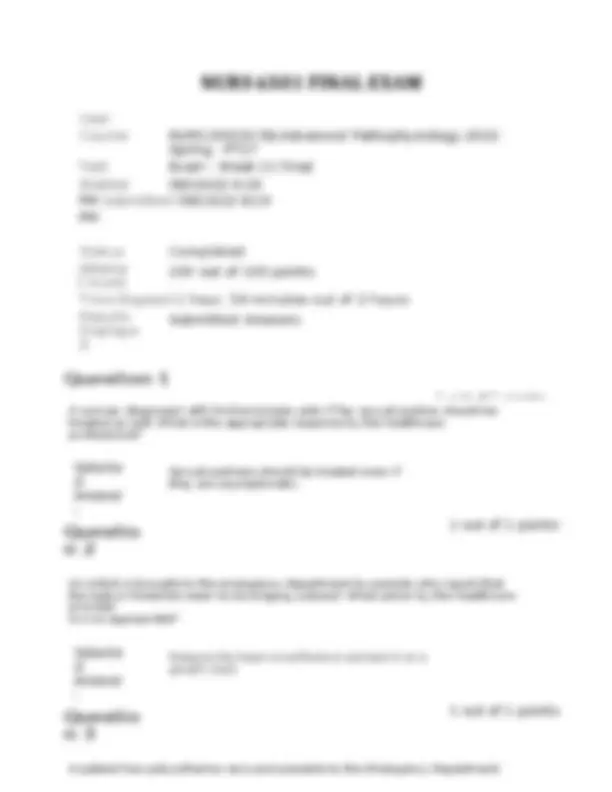

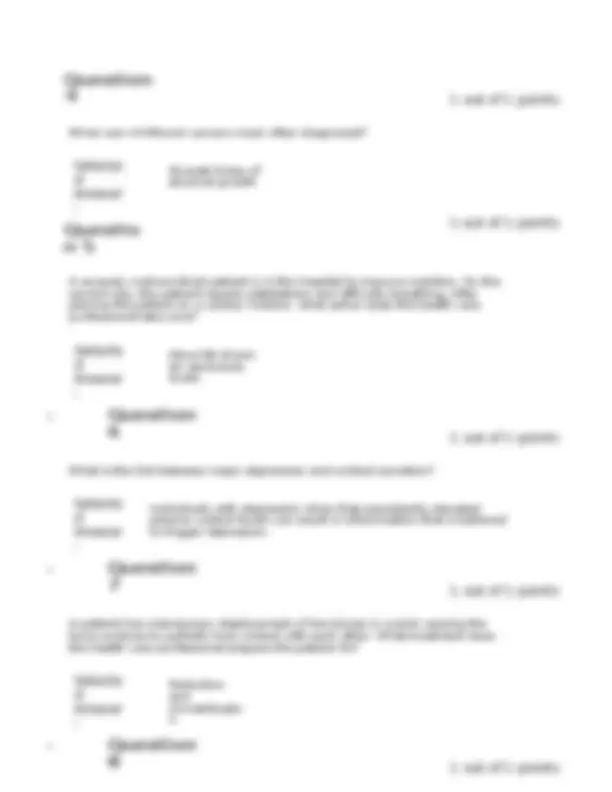

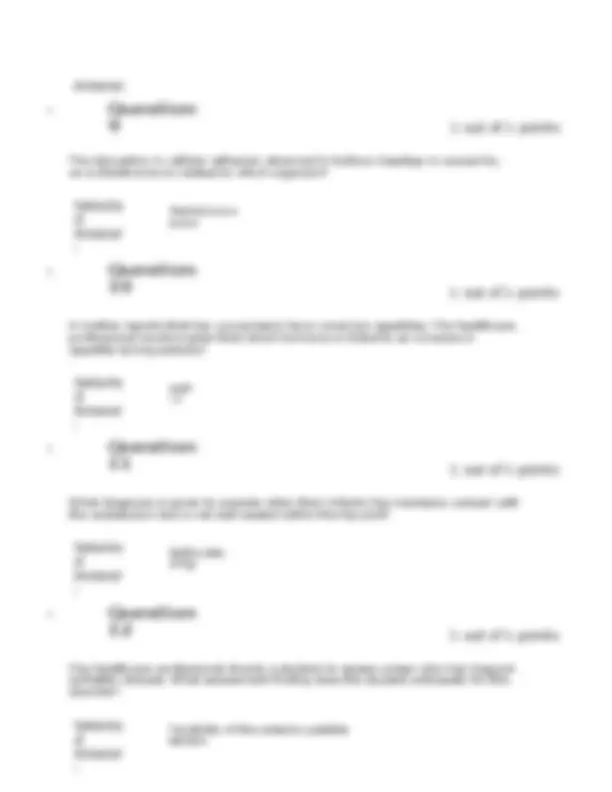

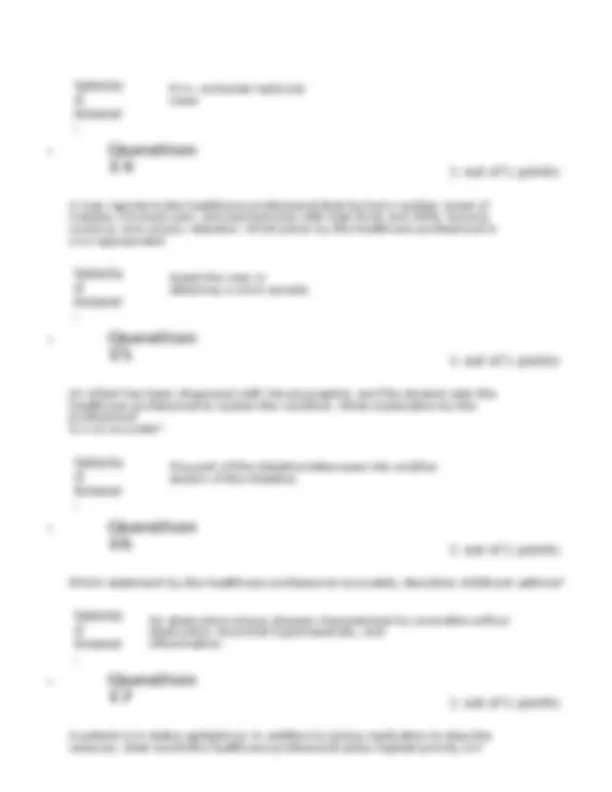

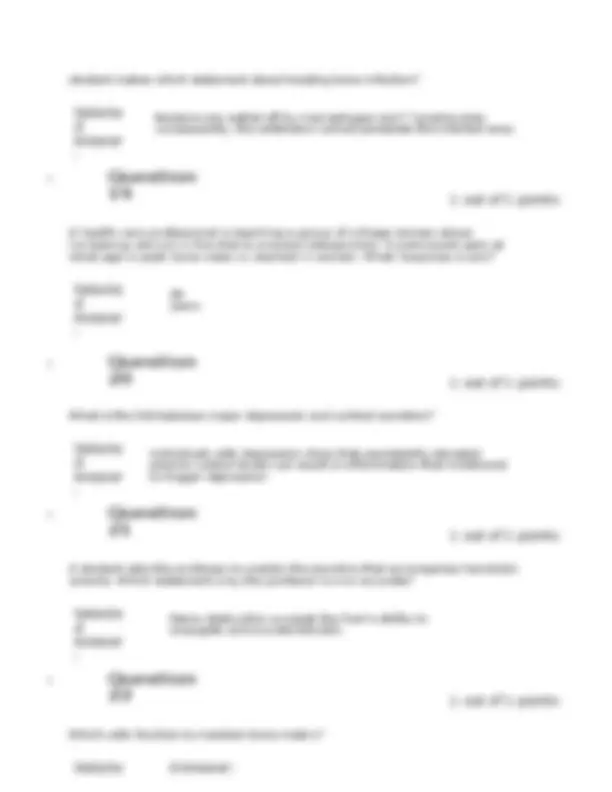



Study with the several resources on Docsity

Earn points by helping other students or get them with a premium plan


Prepare for your exams
Study with the several resources on Docsity

Earn points to download
Earn points by helping other students or get them with a premium plan
Community
Ask the community for help and clear up your study doubts
Discover the best universities in your country according to Docsity users
Free resources
Download our free guides on studying techniques, anxiety management strategies, and thesis advice from Docsity tutors
A comprehensive set of questions and answers covering key concepts in advanced pathophysiology, as assessed in the nurs 6501 final exam. It covers a wide range of topics, including endocrine disorders, hematologic conditions, cardiovascular diseases, and infectious diseases. Valuable for students preparing for their final exam in advanced pathophysiology.
Typology: Exams
1 / 133

This page cannot be seen from the preview
Don't miss anything!





























































































What is the link between major depression and cortisol secretion?
Individuals with depression show that persistently elevated plasma cortisol levels can result in inflammation that is believed to trigger depression. A patient has chronic anemia associated with chronic renal failure. What substance does the healthcare professional tell the patient is needed to treat this anemia?
(^) Question 4
(^) Question 5
(^) Question 6
(^) Question 7
What is the first indication of nephrotic syndrome in children?
A patient is in the Emergency Department with heat stroke. What finding does the healthcare provider associate with this condition?
Clinical manifestations that include irregular or heavy bleeding, the passage of large clots, and the depletion of iron stores support which diagnosis?
The health care professional is caring for a person who has a pathologic fracture. The patient asks the professional to explain the condition. What response by the professional is best?
A patient has a temporary displacement of two bones in a joint causing the bone surfaces to partially lose contact with each other. What treatment does the health care professional prepare the patient for?
(^) Question 13
(^) Question 14
(^) Question 15
(^) Question 16
(^) Question 17
A student studying osteomyelitis and asks for an explanation of the term sequestrum. What response by the professor is best?
Which statement by the healthcare professional accurately describes childhood asthma?
An obstructive airway disease characterized by reversible airflow obstruction, bronchial hyperreactivity, and inflammation A patient has a spinal cord injury at C4. What should the healthcare professional assess as the priority in this patient?
Which cells function to maintain bone matrix?
To quickly assess a patient's nervous system for dysfunction, what assessment should the healthcare
(^) Question 18
(^) Question 19
(^) Question 20
(^) Question 21
professional perform as the priority?
What is the effect of low plasma albumin?
Osmotic pressure decreases; thus water moves from the capillaries to the interstitium. Which immunoglobulin (Ig) is present in childhood asthma?
Which mother does the healthcare professional prepare to administer Rh immune globulin (Rho-GAM) to?
A parent brings a 10-year-old child to the clinic and reports a mottled appearance to the skin and legs cramps when the child is in physical education class. Physical assessment positive for upper extremity hypertension. What diagnostic testing or treatment does the healthcare professional prepare the family for?
(^) Question 27
(^) Question 28
(^) Question 29
(^) Question 30
(^) Question 31
in an effort to decrease heat loss?
How does the epididymis become infected?
The pathogenic microorganisms ascend the vasa deferentia from an already infected urethra or bladder. What are the clinical manifestations of testicular cancer?
A healthcare professional is discussing breast feeding with a pregnant woman. Which beneficial substance does the professional tell the mother is found in breast milk?
The disruption in cellular adhesion observed in bullous impetigo is caused by an exfoliative toxin related to which organism?
(^) Question 32
(^) Question 33
(^) Question 34
(^) Question 35
A patient has been exposed to prolonged high environmental temperatures and now shows signs of dehydration, decreased plasma volumes, hypotension, decreased cardiac output, and tachycardia. What treatment does the healthcare professional prepare to administer to this patient?
A woman who is positive for hepatitis B is in labor. What action by the healthcare professional is most appropriate?
A healthcare professional is planning a community event to reduce risk of cerebrovascular accident (CVA) in high risk groups. Which group would the professional target as the priority?
A pregnant woman is seen for the first time at 6 months' gestation and has not taken prenatal vitamins. The healthcare professional educates the woman on the need for a blood test specifically to assess what substance?
A healthcare professional is seeing a patient with suspected schizophrenia. For which prenatal occurrence should the professional assess?
(^) Question 41
(^) Question 42
(^) Question 43
(^) Question 44
Which patient finding would lead the health care professional to assess the patient for inflammatory joint disease?
A student asks the professor what the most common pathophysiologic process is that triggers aplastic anemia (AA). What response by the professor is most accurate?
A student is learning about pelvic inflammatory disease (PID). What information does the student clarify with a study partner as being correct?
Such an inflammation may result in permanent changes to the ciliated epithelium of the fallopian tubes. A patient in the healthcare clinic reports fatigue, weakness, and dyspnea, as well as pale conjunctiva of the eyes and brittle, concave nails. What assessment by the healthcare professional is most appropriate for the suspected anemia?
A patient is 8 hours postoperative after a long orthopedic procedure. The student asks why this patient is at particular risk of developing a thromboembolism. What response by the healthcare professional
(^) Question 45
(^) Question 46
(^) Question 47
(^) Question 48
(^) Question 49
is best?
A healthcare professional suspects a patient is brain dead. How would the professional assess for brain death?
An adult patient has been hospitalized with thrombocytopenia with a platelet count of 8000/mm 3. What action by the healthcare professional is most appropriate?
A child with acute poststreptococcal glomerulonephritis is voiding smoky, brown-colored urine and asks the healthcare professional to explain what causes it. What explanation by the professional is best?
A patient has pernicious anemia and asks the healthcare professional to explain the disease. Which statement by the professional is most accurate?
(^) Question 55
(^) Question 56
(^) Question 57
(^) Question 58
How should the healthcare professional reply when parents question why a computed tomographic (CT) scan of the head was not ordered for their 5-year-old child after a minor fall?
Research suggests that repeated CT scans can increase the risk of developing brain cancer A healthcare professional is trying to lower a patient's body temperature by convection. What action by the professional will accomplish this?
A patient has primary immune thrombocytopenic purpura (ITP) and is hospitalized after a bleeding episode. What treatment does the healthcare provider anticipate being ordered for this patient?
A student reads in a chart that a child has been diagnosed with mixed precocious puberty and asks for an explanation. What explanation by the healthcare professional is most accurate?
A woman attempting to conceive tells the healthcare professional that she and her partner have intercourse when her basal body temperature (BBT) is around 37˚C (98˚F) without getting pregnant. What information does the professional give the woman?
Question 63 (^) Question 59
(^) Question 60
(^) Question 61
(^) Question 62
A student reads in a chart that a baby was born with an encephalocele. The student asks the healthcare professional to explain this condition. What explanation by the healthcare professional is best?
A student asks the healthcare professional why researchers are trying to link specific genes to specific asthma phenotypes. What response by the professional is best?
A health care professional is teaching a group of college women about increasing calcium in the diet to prevent osteoporosis. A participant asks at what age is peak bone mass is reached in women. What response is best?
The student wants to know how the clinical manifestations and onset of juvenile idiopathic arthritis (JIA) differ from those of rheumatoid arthritis (RA) in adults. What answer by the healthcare professional is best?
(^) Question 68
(^) Question 69
(^) Question 70
(^) Question 71
(^) Question 72
A patient is in the intensive care unit and has intercranial pressure (ICP) monitoring. The patient's ICP is 17 mmHg. The healthcare professional notes that the chart indicates the patient is now in stage 1 intracranial hypertension. What assessment finding does the professional associate with this condition?
A preschool teacher notices a child who has burrows on the hands that are several millimeters to 1 cm long, papules, and vesicular lesions. What other assessment finding would help the teacher determine the type of infestation the child has?
A man has balanitis. What action by the healthcare professional is most appropriate?
Which condition is consistent with the cardiac defect of transposition of the great vessels?
(^) Question 73
(^) Question 74
(^) Question 75
(^) Question 76
A newborn has meconium ileus. What diagnostic test does the healthcare professional advise the parents about?
Which condition is considered a clinical cause of amenorrhea?
The healthcare professional directs a student to assess a teen who has Osgood-Schlatter disease. What assessment finding does the student anticipate for this disorder?
A healthcare professional is educating a community men's group on symptoms of benign prostatic hyperplasia (BPH). The professional relates that most symptoms are a result of which pathophysiologic condition?
A patient has been diagnosed with acute lymphocytic leukemia (ALL) and asks the healthcare professional to describe it. What description by the professional is most accurate?
Question 86 (^) Question 82
(^) Question 83
(^) Question 84
(^) Question 85
What is the most abundant class of plasma protein?
A baby is born with a myelomeningocele and needs urgent surgery to repair the defect. The parents want to take the baby home instead. What does the healthcare professional tell the parents about the purpose of this surgery?
A student asks the health care professional why obese people are at higher risk for hypertension than non-obese individuals. What response by the professional is best?
In the majority of children experiencing delayed puberty, what is the problem caused by?
A patient has been diagnosed with lithium toxicity. Which electrolyte imbalance does the healthcare professional correlate with this condition?
(^) Question 87
(^) Question 88
(^) Question 89
(^) Question 90
A healthcare professional has educated a student on folic acid. Which statement by the student indicates that more teaching is needed?
A patient had a seizure that consisted of impaired consciousness and the appearance of a dreamlike state. How does the healthcare professional chart this episode?
A health care professional is caring for a patient admitted to the hospital with severe anorexia. What action by the health care professional would be most important?
Parents report their 3-week-old infant who eats well and has gained weight began to have projectile vomiting for no apparent reason. What treatment option does the healthcare professional prepare to educate the parents on?
Prenatal exposure to diethylstilbestrol (DES) can result in which type of cancer?